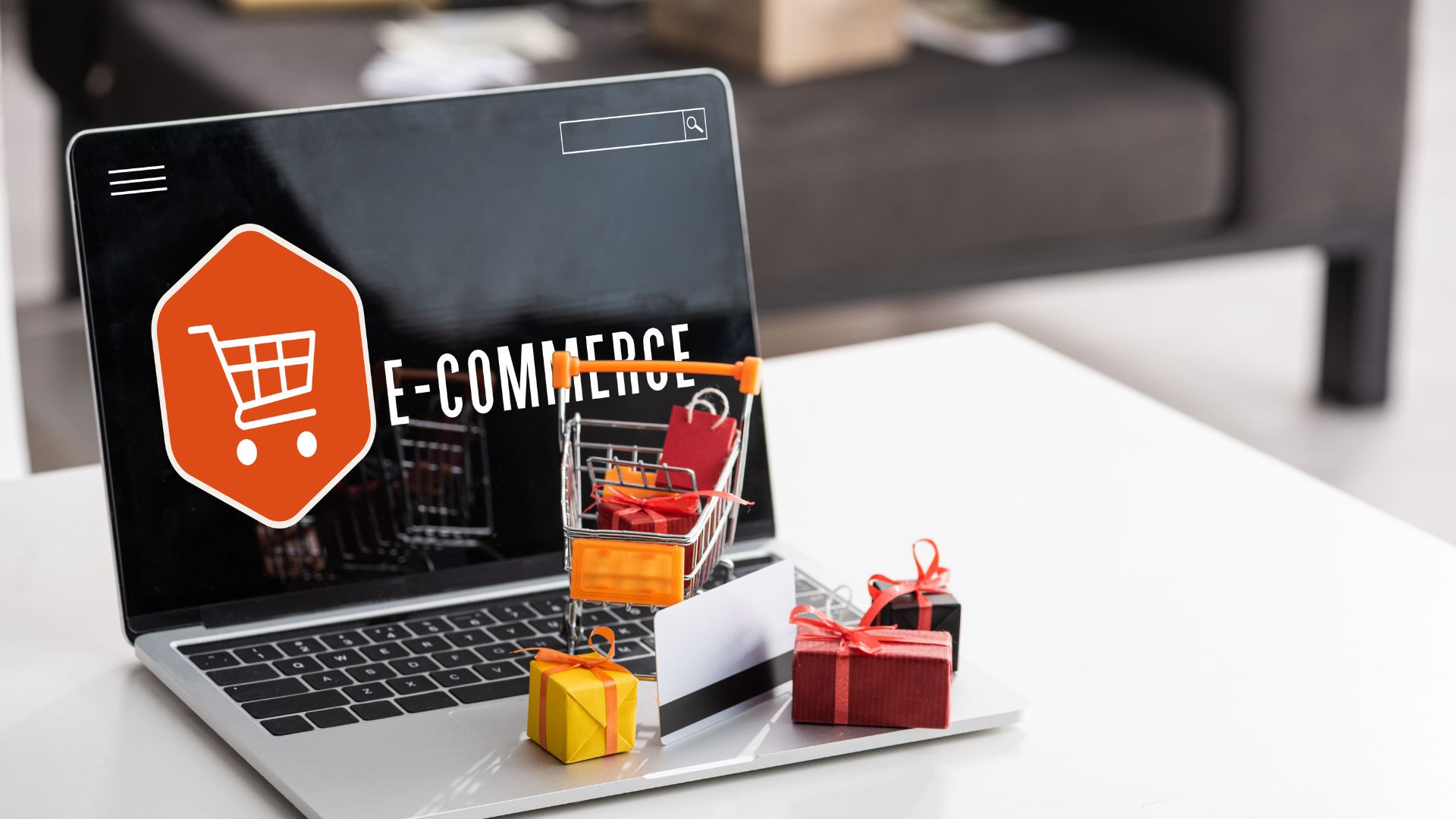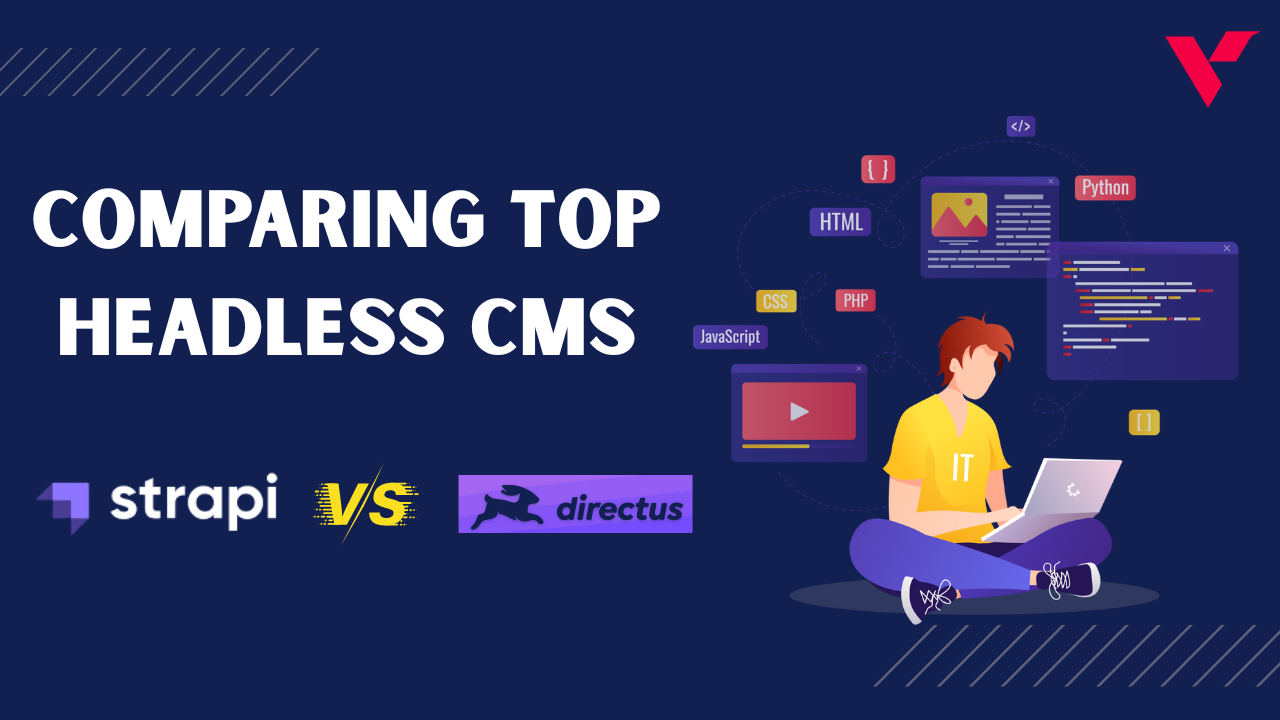Popular Tools by VOCSO
Whether you’re an eCommerce site owner or not, having a functional website is important for your business. A good user interface will make it easier to find what product someone needs and give them all the information they need before making their purchase decision. When building an effective eCommerce website, it’s important to consider the features that will make your site stand out from the competition and provide a great user experience for your customers.
Just because you have an online storefront does not mean your business is automatically eCommerce ready. If you’re looking to take your business to the next level, make sure your eCommerce website has all the features necessary for a successful eCommerce venture.
You might be wondering what features are most important for the success of your eCommerce website, or which eCommerce platforms can best help you achieve your goals? You’ll get answers to your question in this article in-depth:
Table of Contents
Basic E-commerce Features List
When it comes to e-commerce websites, there are so many different features that can be added for the site to stand out. Each online store should have unique branding and design but also functionality which makes them more competitive against other sites in similar markets or niches.
Let’s explore what are the fundamental Ecommerce features list for 2023
#1. Security

When you think about the features that make up an e-commerce site, one thing should be at the top of your list: security. All people want to feel safe when they’re making transactions online and so we need our customer’s personal data protected as well – which means ensuring its integrity throughout each step in order not only to protect their purchase but also to prevent any customer fraud, hacking phishing attacks or installing malware and identity theft while keeping them informed on what’s happening.
SSL certificates are important for website security. They guarantee the privacy and confidentiality of customers’ sensitive information, such as login credentials or payment details; this makes them ideal to protect against cyberattacks that could result in identity theft!
The move from HTTP to HTTPS enables websites to use an SSL certificate will better protect your data while you browse online with peace of mind.
When you want to win customers’ trust and start building loyalty from first sight, an SSL certificate is a great way of doing so. A person won’t purchase if they don’t feel confident with your website because it will give them peace of mind knowing everything on the site has been protected by HTTPS connection.
#2. Branded Design

When you create a brand, you’re creating an experience. You want to make it memorable and useful enough so that people will want to continue to interact with your business.
Branding is not just a logo or a catchy slogan. It’s everything that makes your business unique and recognizable, from website design to customer care. And it’s the first thing that people notice. In e-commerce, branding is hugely important, because as customers are not physically connected to the business, they rely on strong representation to decide whether they can trust your brand or not.
Surely, you have heard about companies like Apple or Nike who have built their brands using simple yet effective techniques. What they did is almost too simple: they put their logos everywhere. They use them as a reminder of what their brand stands for.
However, it’s not until people get curious enough to find out more about the company that they start remembering its mission and values. That’s when the magic happens: people start caring and feeling connected to a brand. which is why one should focus on branding strategy.
#3. User- Friendliness
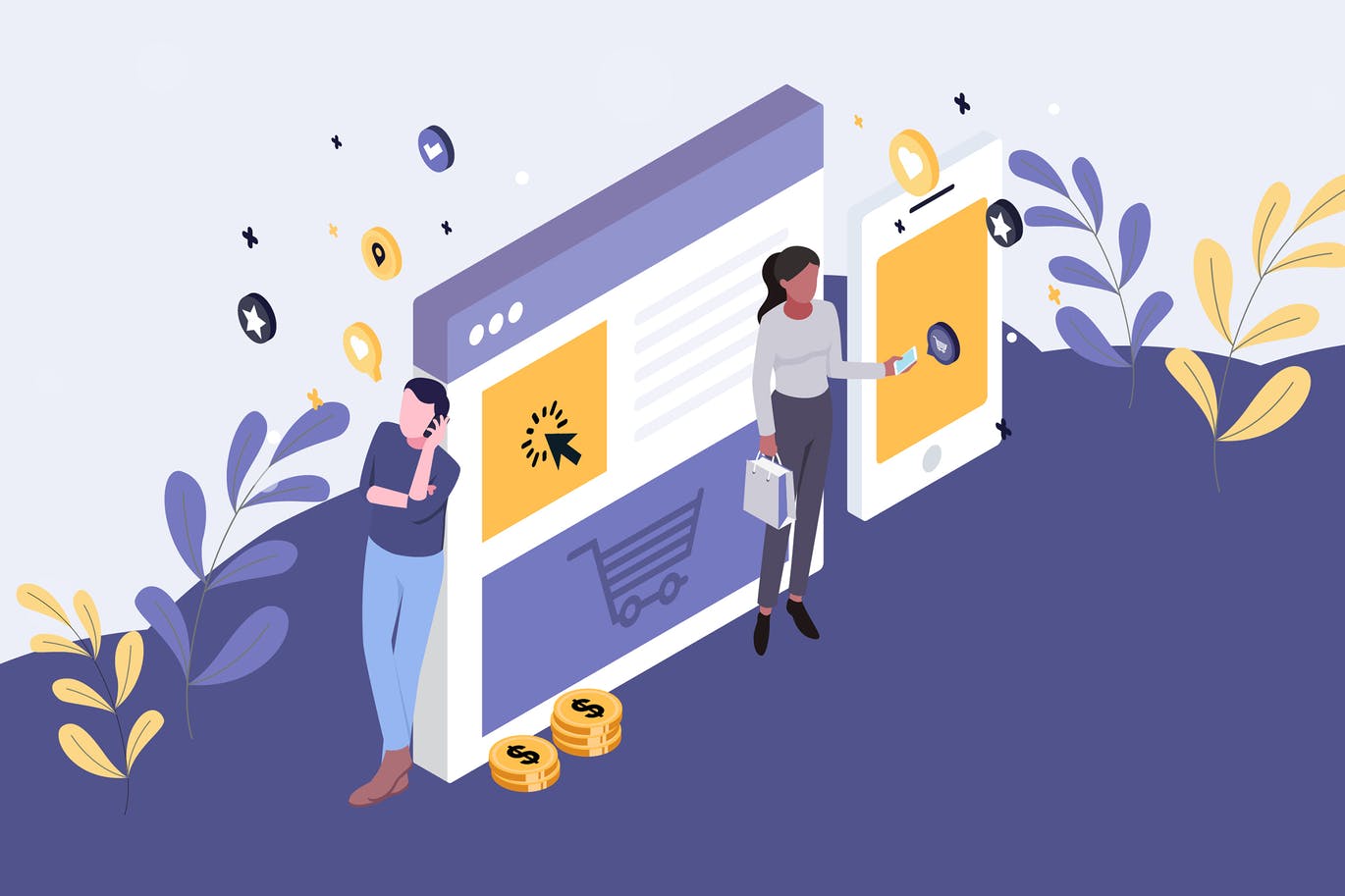
User experience is the result of customers’ interaction with your website and the feeling they have when interacting with its elements. The user-friendly website design has a positive impact on visitors’ emotions, which leads to better engagement and conversion. If a site is not intuitive and convenient to use, visitors will leave it without taking any action — make a purchase, fill in a form, subscribe to your newsletter, and so on.
The usability of your e-commerce website is a key element of its success. Your primary goal is to offer users the best shopping experience possible and help them find what they are looking for quickly. If you manage to do this right, there will be more sales and return customers.
User-friendly websites are developed based on the user’s needs, habits, and behavior. To create such a website, you need to know what users want from your website, what problems they face when using it, how they navigate through pages, etc. And these factors can be studied through usability testing that allows assessing how users perceive your website.
#4. Mobile Friendly
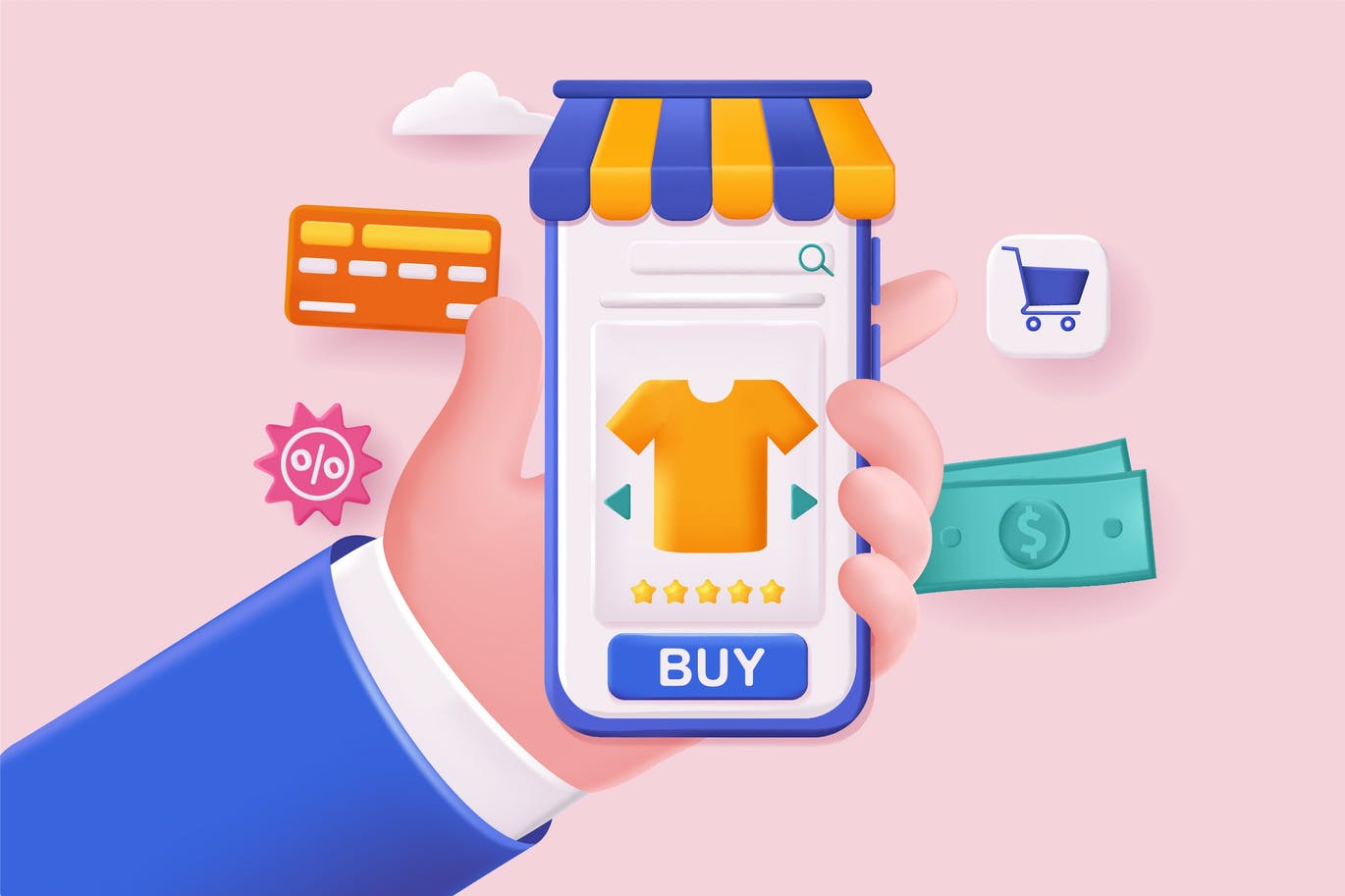
Ecommerce is going through a tremendous change. Consumers show little loyalty to brands, and it’s hard for small businesses to stay on top of their game. However, there are some e-commerce features that will boost the conversion rates of your website like mobile friendliness.
Mobile devices account for more than 50% of web traffic and there is no sign that this tendency will change. Therefore, keeping up with customers’ preferences, Google requirements, and adapting a website to mobile devices will give a huge boost to your store’s traffic and revenues. There are things to keep in mind when making your store friendly for mobile users.
To stay competitive in the eCommerce market, your online store should be mobile-friendly. A unique and straightforward experience for website visitors will create a better chance of converting them into buyers. Keep the design simple and structured. Think about where you want people to navigate, what their options are for clicking on that particular section of your site or app (i.e., an obvious CTA), as well as how they can find more information. Checkout processes can also be streamlined by implementing autocomplete functionality for search and address completion. Guest checkout is an option that might cut down the number of mandatory fields while adding social media login options will allow customers to access their accounts.
Is your website mobile-friendly? If not, you could be missing out on a lot of business. In a recent study, the number of smartphone users surpasses six billion already. If your website doesn’t look good on a phone or tablet, you’re going to lose out on those customers. Luckily, making your website mobile-friendly is easier than you think. It’s a must-have for any e-commerce website that wants to boost its conversions and increase revenue.
#5. Browser Compatibility
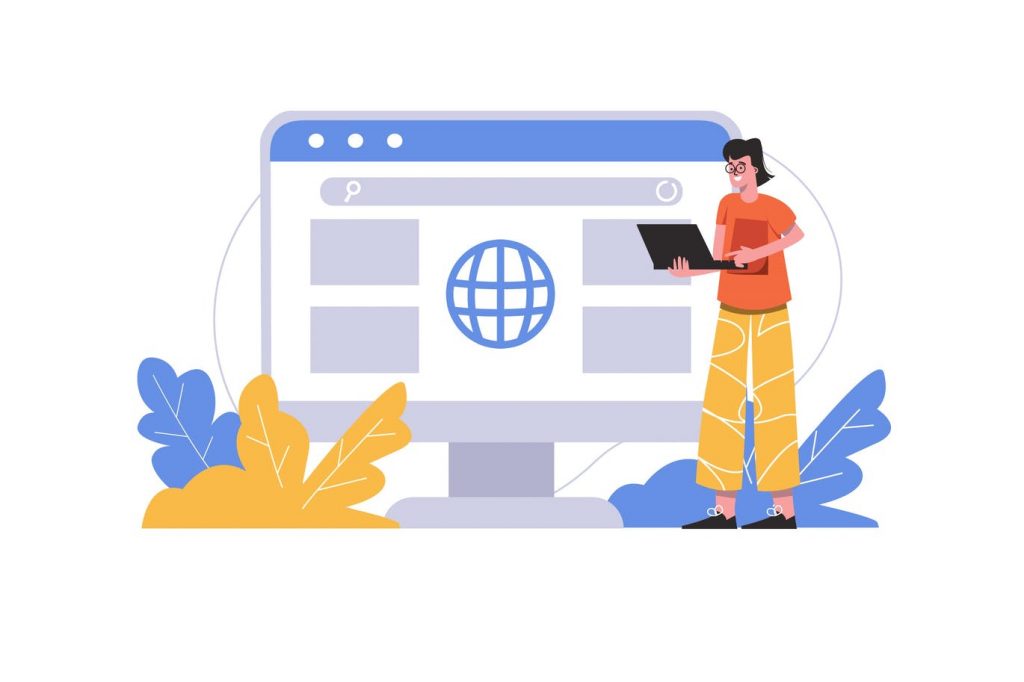
The rendering of HTML content varies from browser to browser. For example, Safari doesn’t display SVG images but Edge will show a font that is used within your website as Arial by default and at times Helvetica instead! This can influence how much time people spend on the site and what products they buy since consistency in interface quality leads directly to trustworthiness when purchasing goods online or otherwise.
Websites that are not compatible with different browsers will lose customers to competitors. 88% of online shoppers say they wouldn’t return after experiencing a bad user experience, so it’s important for e-commerce sites to have full browser support.
The most popular web browser amongst customers is Google Chrome, but it’s important to keep in mind that you can’t just plan for one platform. Check your analytics and see which browsers our website visitors use most often on the site – an experienced QA engineer will help identify any compatibility issues before they become problems also they create reports listing used test cases along with discovered bugs so merchants/Business analysts have all necessary data at their fingertips when preparing promotional campaigns for launching new products.
#6. Payment Options
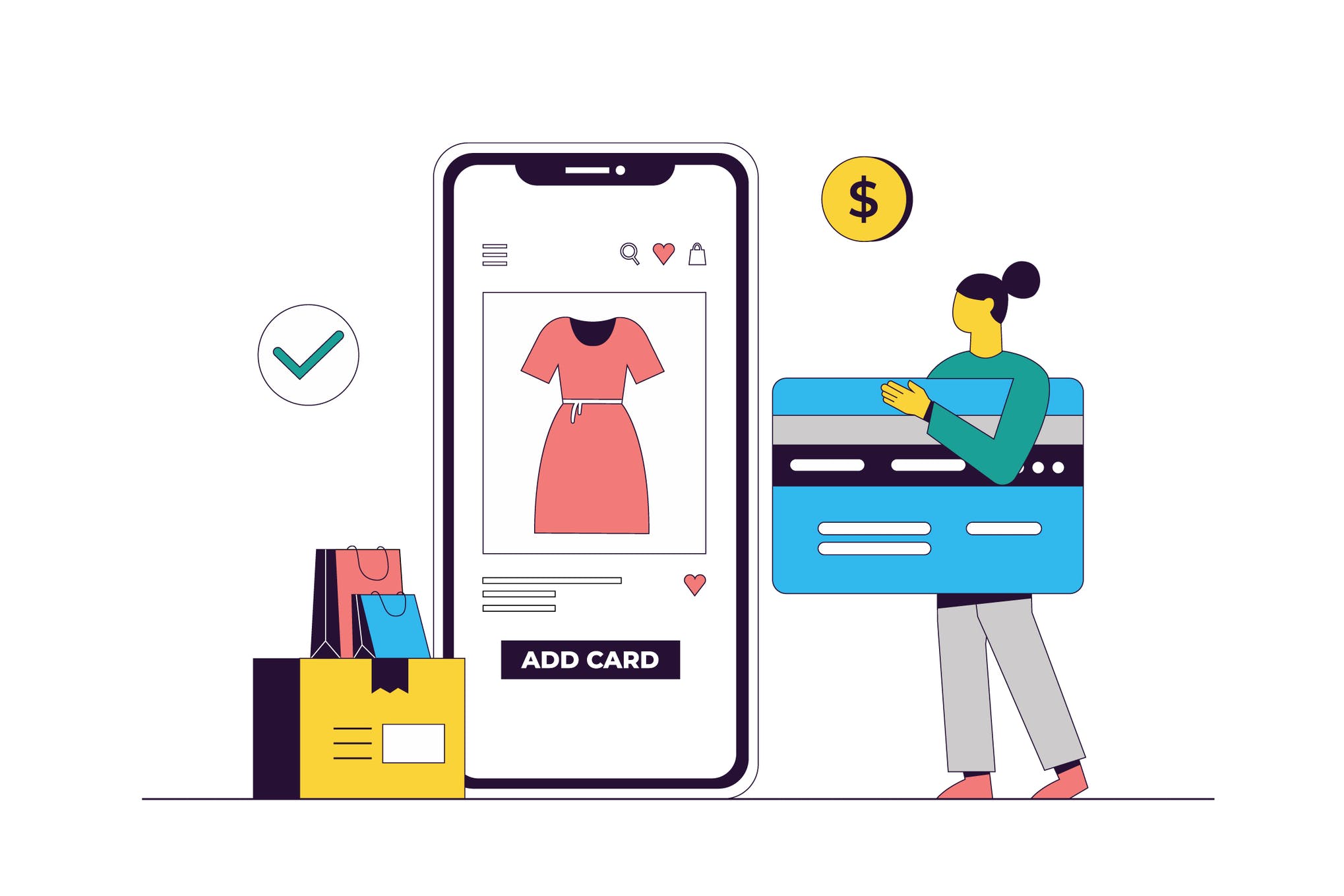
When it comes to an e-commerce business, commercial transactions are at the foundation. This means that payment options should be mandatory features for any website aspiring toward being considered a store in this industry. The majority of people make their payments online with a credit card or some other form of electronic transfer. These days, more and more shoppers are using digital wallets to pay for purchases on websites instead because they’re easier than swiping cards.
E-commerce merchants should always take into consideration what payment options are preferred by shoppers when it comes time to make a decision. It is also beneficial, though not necessary for all retailers at once, to look into which online payments work best within your region or among the customer base you’re targeting. An individualized approach will lead you far.
To facilitate a payment transaction, you can use several different gateways. When choosing which one to choose for your store take into consideration that they all have their pros and cons depending on what kind of business structure is most compatible with yours or if there are any other considerations specific only towards this type retailer/company would like assistance from them regarding–Payment Gateways typically charge fees associated. It’s important to research ahead when looking at potential surprises later down the line.
#7. Shipping

When it comes to shipping, the most important thing is that you get your customers what they want and need. E-commerce businesses should have a strategy in place for this critical feature so their business can thrive with both cost efficiency while still providing great customer service through reliable delivery times!
A recent study showed 38% of consumers never shop at retailers again due to bad experiences with deliveries. To avoid this, you need a shipping strategy that balances your costs while still being reliable and pricing things competitively so buyers can buy what they want without feeling like it’s too expensive or not worth the price.
The shipping conditions determine how customers will feel about an online store. If they offer better than average service, then this could be a deciding factor in their purchase decision because 60% of shoppers compare different stores’ offers and choose the one with attractive rates or free delivery.
Shipping options for an e-commerce store can be overwhelming. There are various factors that you need to take into accounts, such as the target audience and product type of your business.
To choose which shipping carrier will work best with these details factored in carefully then there’s no universal solution but each company has its preference when it comes down to deciding what they use because every situation varies slightly differently.
#8. Fast Loading
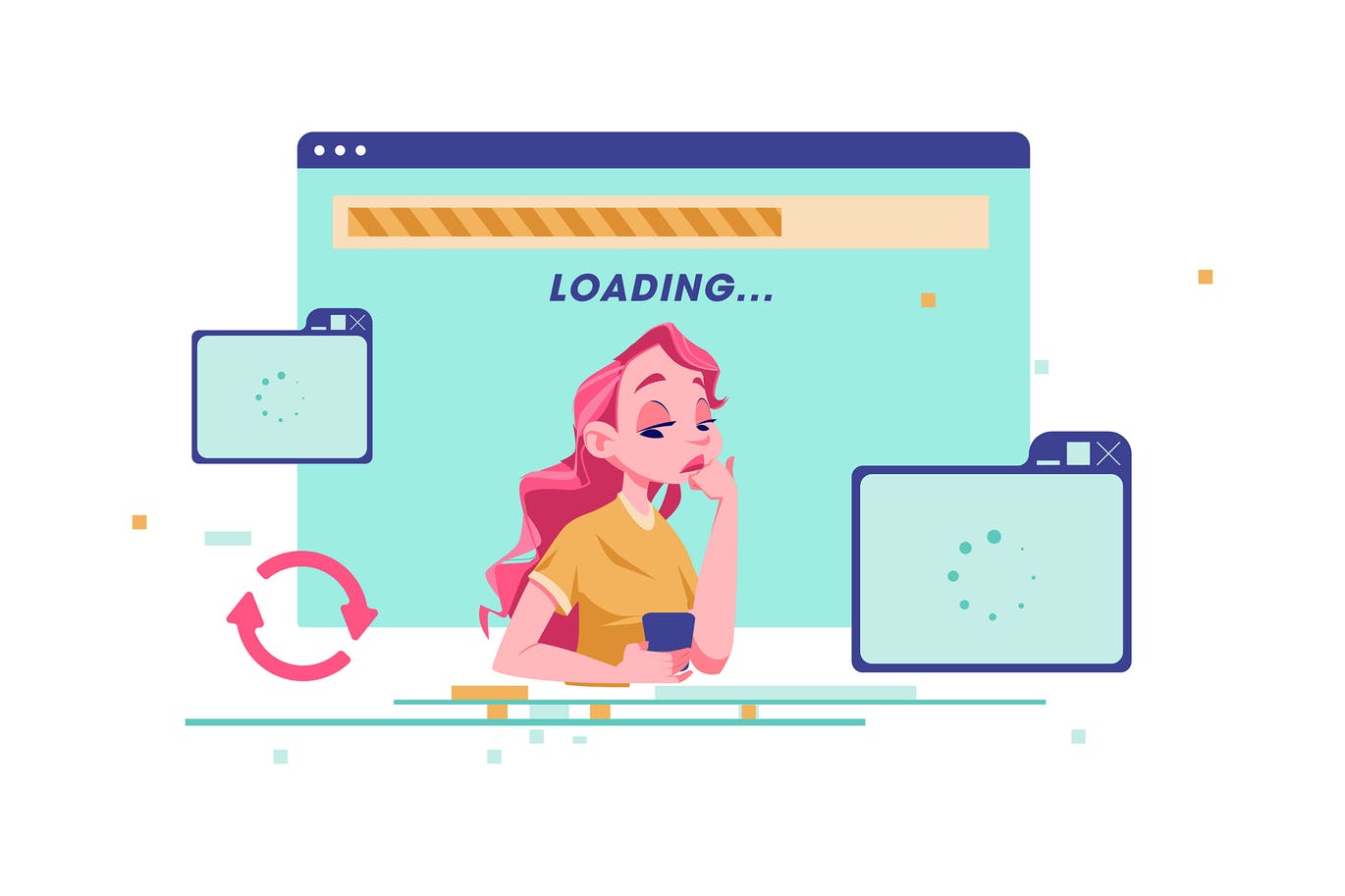
E-commerce businesses are often time-crunched. With the way technology has advanced, many websites used to be slow and laggy – but not anymore! People have grown accustomed to waiting for their favorite online stores because they didn’t know it could be different. However with advances in speed from both networks AND web designers who understand user expectations now more than ever before; people can easily find what they’re looking for quickly without sacrificing quality or arcade experience. Page speed is a crucial factor in how much people will spend on your store.
If they have to wait too long or see slow loading pages, then you’re likely going to lose potential customers and sales!
The data shows that faster sites are more likely to produce higher conversion rates than slower ones so it’s important for any business owner looking at improving their product offerings online
It’s important to take the time and invest in understanding how your website performs. Indicators that are commonly used for measuring e-commerce speed include things like bounce rates, conversion rates as well customer loyalty information which can all provide insight into where improvements need to occur when it comes down to this arena.
#9. Refunds

Merchants who offer returns and refunds can give their customers the peace of mind that they need, especially if it’s something very specific like an item. The e-commerce features needed for this process make them difficult to implement without sacrificing other important aspects such as security or ease of use; however, by doing so you’re providing your customer with what he wants which will keep him coming back again. However, there are a few other reasons you should do so let’s have a look at it
Trust Building – When you have a clear and easily accessible return policy, people will buy from your store. Knowing they can receive their money back if something goes wrong, establishing a sense of security for the customer while also making them feel safe in purchasing items online with confidence – all lead to customer retention.
Customers’ Attraction – It is not obvious from the start, but a return policy can advance your marketing strategy as most shoppers check out a website before completing their order! Showing transparent conditions for returns and exchanges shows that you trust both products as well as customers enough to let them exchange or refund if something isn’t what they expected – this will increase customer loyalty which leads back to more sales overall.
Professionalism -It is important to be a professional company that handles complaints. Reputable businesses are not afraid of taking responsibility when it comes down to their products, so if you have an official return and refund policy then this means your business has shown its willingness in addressing problems with customers before they become more serious issues.
#10. Discounts
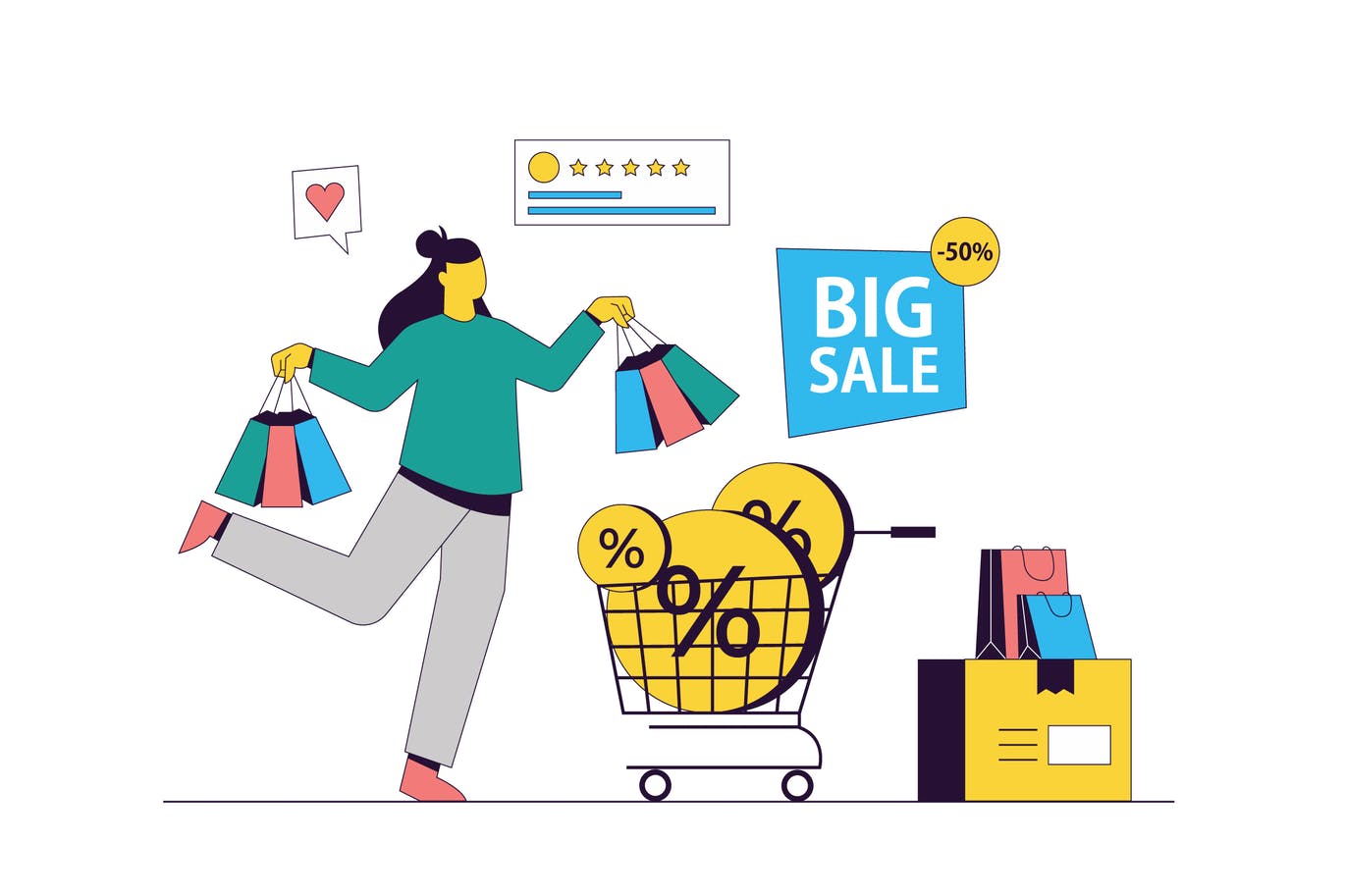
With the growing popularity of online shopping, many websites are offering discounts and coupons to their customers. While these e-commerce features may seem like a no-brainer for people who want savings on an order or as part of their marketing strategy – it’s important not to overlook how much we love them! What makes these special? Well aside from being loved by all patrons due in large measure because they save money (and time), discounting can also work unconsciously beneath our radar via subconscious advertising methods that promote brand loyalty over low prices alone.
Discounts are a great way to get people’s attention and make them feel like they need your product or service immediately. The fear of missing out on an opportunity can be enough motivation for most customers. With limited periods, people have no choice but to order immediately in order not to miss their chance at saving money and getting something special.
The best way to make sure people see your offer in the store is by creating top header banners that are visible on each page, adding special tags like ” Sales & Discounts” when applicable for product or category pages. You can also send emails notifying them about sales and discounts so they’re always aware of what’s going down.
E-commerce Homepage Features (Incl. Header and Footer)
The homepage is the first impression of your business. It needs to be well designed, clearly structured, and offer people what they are looking for when browsing through websites in their area or online store’s category “e-commerce”. When designing this part on your site make sure that all-important features like an easy navigation system with links organized into categories according to each page topic will benefit not only you but also those who might want products from you.
#1. Logo
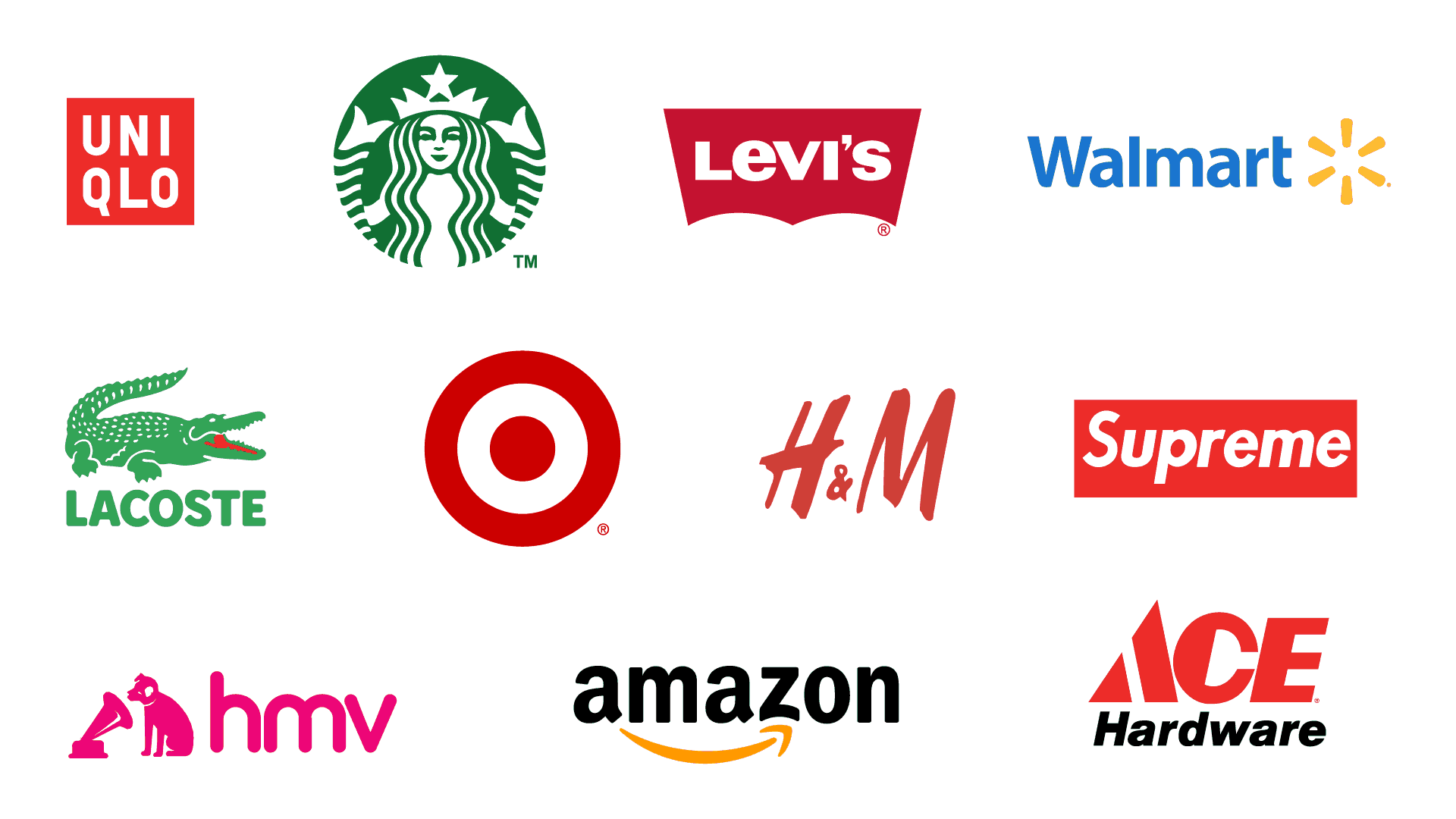
Choosing a logo is a big decision for your business. A great logo can help you attract new customers and keep loyal ones coming back for more.
Before you start designing a logo, it’s crucial to consider what your brand represents, as well as the feelings you want your logo to evoke in your customers. Your design should reflect the exclusive nature of what you offer or the values that make your brand unique.
The first step in creating a logo is choosing the texts, images, or shapes that will help people recognize your brand. Its goal should be distinctive enough so you can distinguish yourself from competitors.
After choosing relevant symbols, use them to build an eye-catching and memorable logo that reflects your company’s values. You can achieve this by applying different design principles and elements to create an attractive design. Make sure you choose a font or images that are appropriate for your industry or niche.
#2. Search
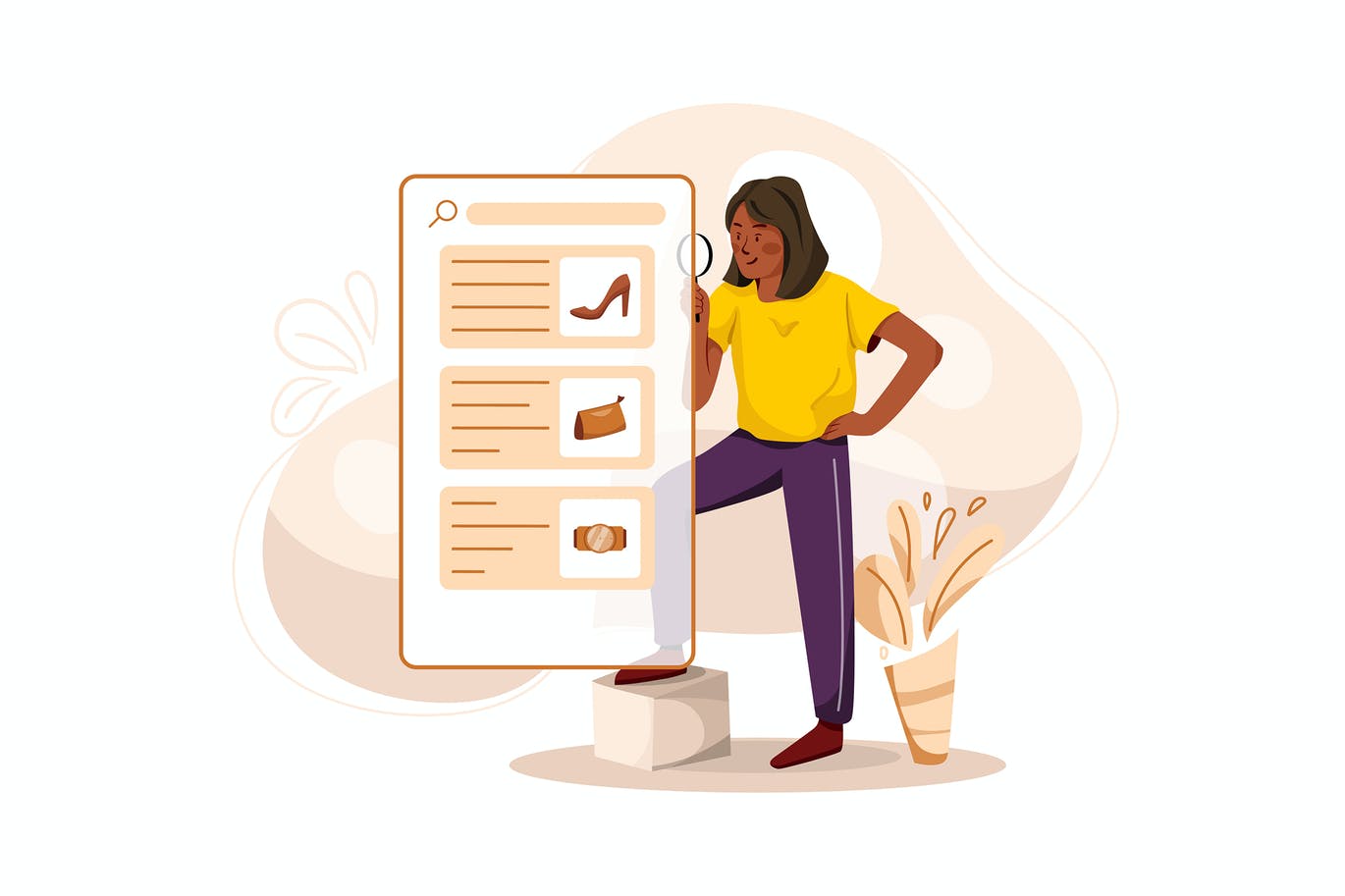
Search is one of the most important features of any online store because it can help you find exactly what people are searching for. It also lets users bypass traditional browsing and get right to their desired product or service quickly without having to search through endless pages.
When you’re trying to find your way through an e-commerce website that has thousands of products, it’s easy for customers’ expectations and wants on what they should see when searching a search bar or autocomplete feature. If these tools can help give them more results in less time then there is no reason not to take advantage! You may even want to consider implementing both filters as well so people get only those items most relevant – increasing efficiency yet again.
#3. Customer login
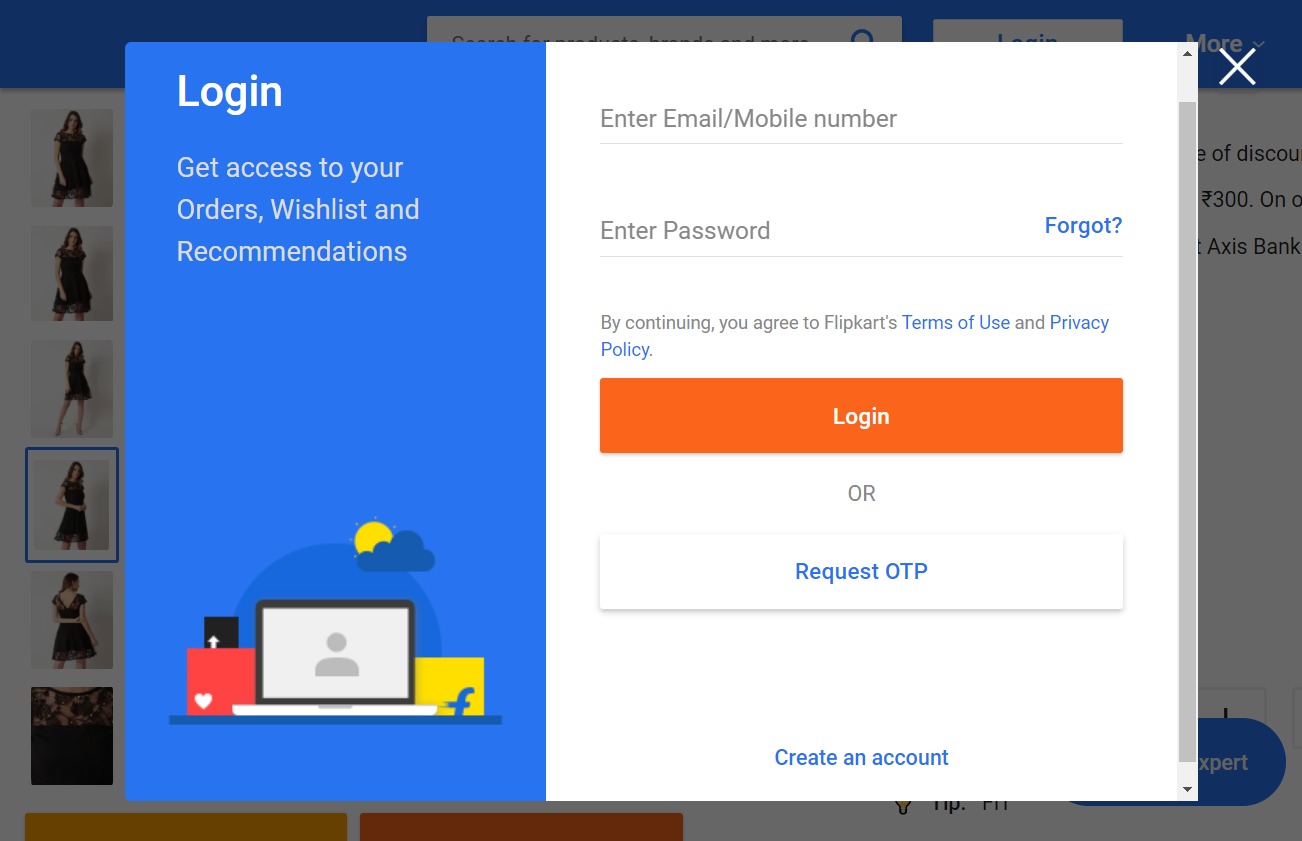
Logging into your e-commerce website is a mandatory feature that enables customers with their personal space where they can view order history, payment, and shipping information. Shoppers feel more willing when use this service since it makes the entire shopping experience smooth & seamless! Make sure you have clear login buttons or icons placed at strategic locations on pages for easy access so people don’t get lost while browsing around looking for what they need.
#4. Wishlist
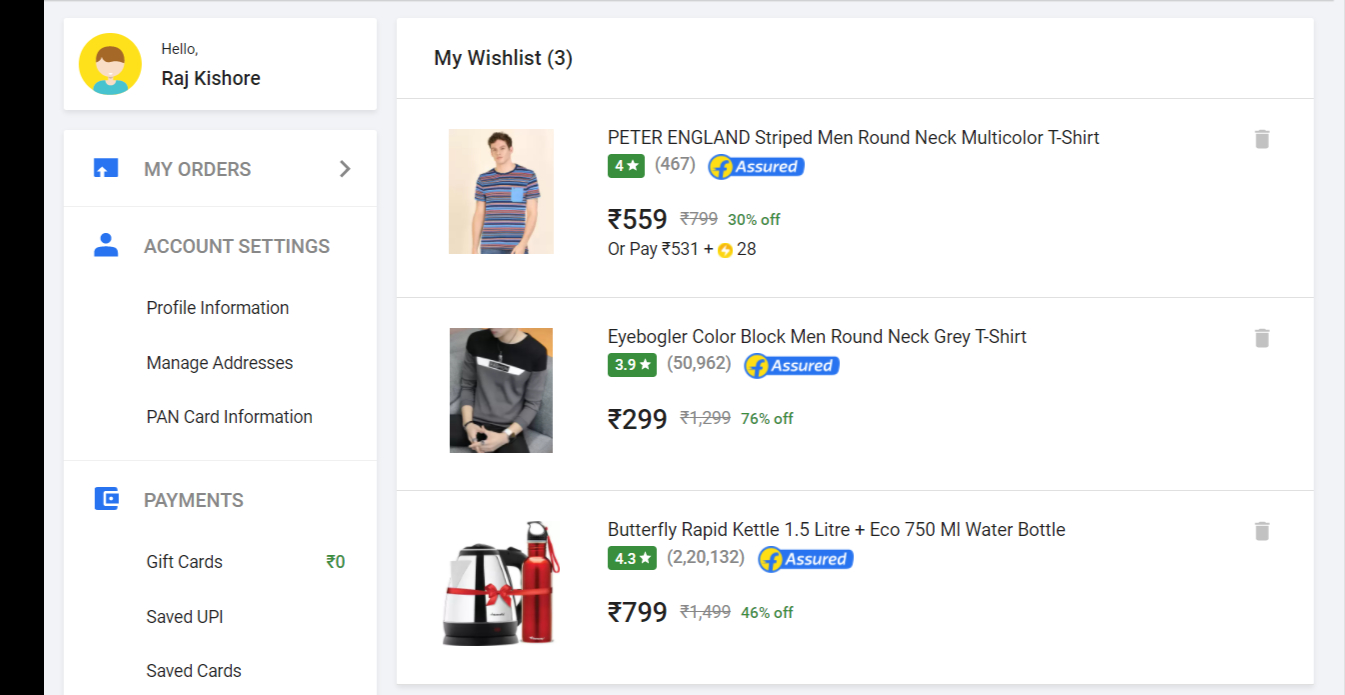
A Wishlist is a list of products that customers like and want to buy at some point in the future. It allows them to save items they find interesting on your online store so they can come back to it later and make a purchase. A Wishlist is similar to an online shopping cart, but the difference is that shoppers don’t need to decide immediately if they want to buy a product or not. They can simply save it for later when making a purchase decision.
Many eCommerce merchants choose not to implement this feature on their websites because they think it doesn’t bring enough value. However, this feature can be very beneficial for merchants who have complex shopping processes or lengthy buying cycles, such as furniture stores or DIY shops. In this case, customers need more time before committing themselves to purchase products, so a Wishlist is a great way of keeping track of items that interest them.
A Wishlist gives you an insight into all aspects of your business – from product choice to marketing strategy and customer preferences. This information can be extremely important for merchants because it allows them to reach out and become more successful in their industry.
#5. Shopping Cart
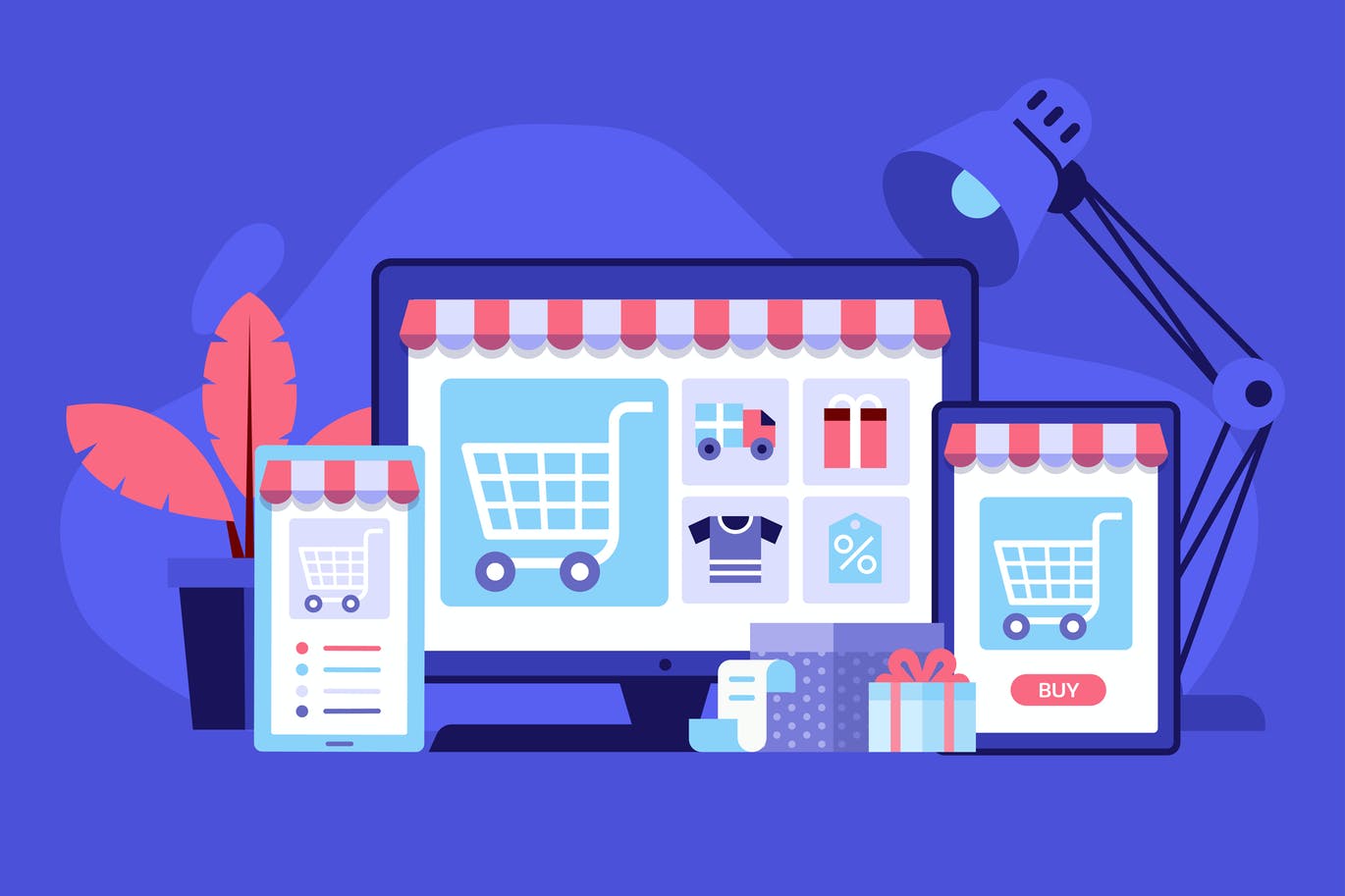
To create a seamless shopping experience for customers, your website must have an efficient checkout process. A cart icon in the top right corner of any page can help streamline this part of using eCommerce features on-site and will encourage people who are interested but have not yet made their purchase decision to do so easily by Prices or adding items straight away onto lists.
#6. Social Media Links

Transparency is key to building customer loyalty. By giving visitors the opportunity to contact, you can create a relationship that will keep shoppers coming back time and again with their business! If features such as social media links are included on your list of essential online store website traits then don’t forget about this small but effective way forward. By investing in the time and effort it takes to maintain a strong online presence, you’ll find that the rewards far outweigh your initial efforts.
#7. Loyalty Programs
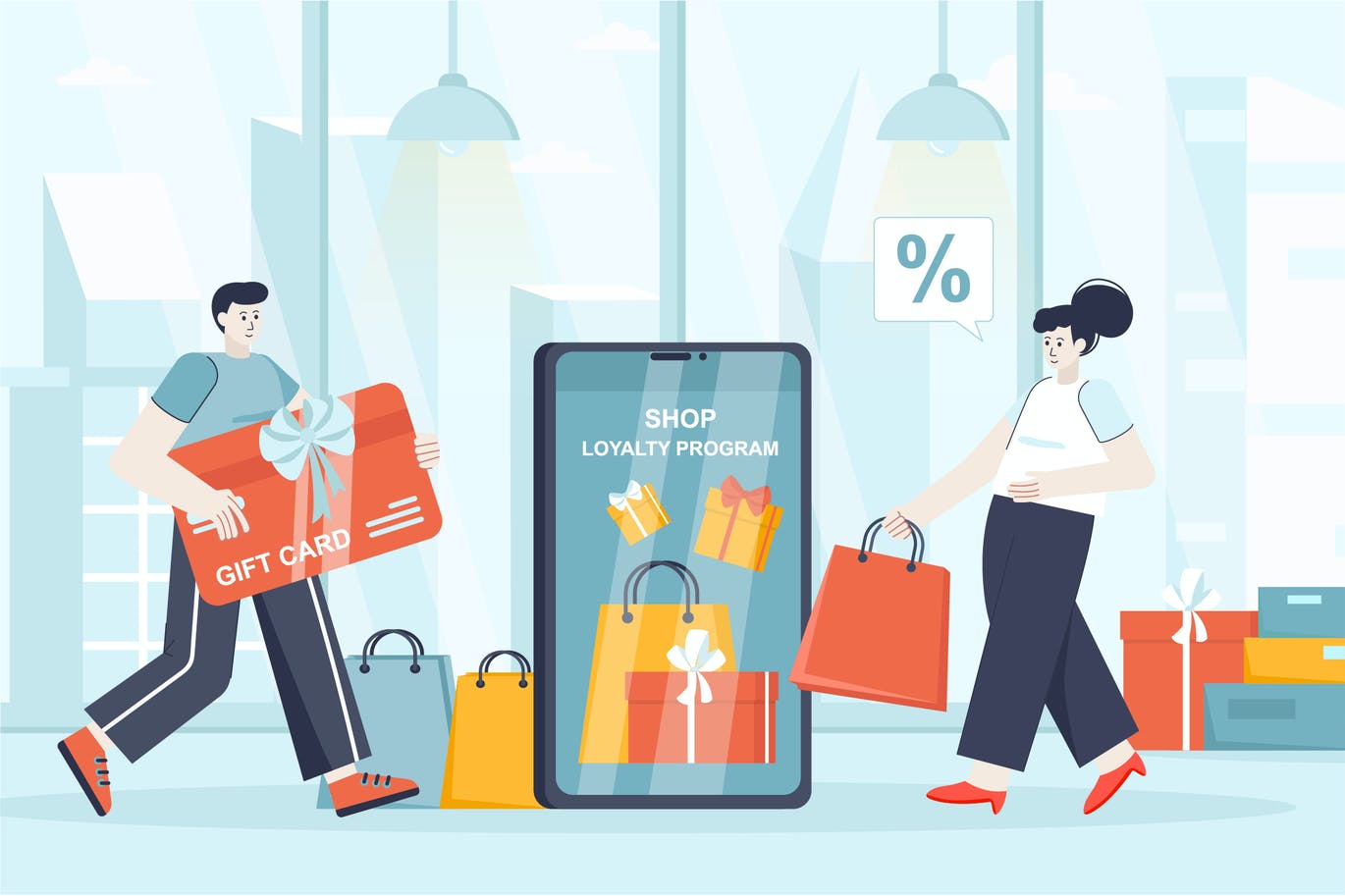
This is a great way to get repeat business! If you offer special bonuses, rewards, or perks for your loyal customers then the homepage should mention this. Make it easy enough that anyone could understand what’s on offer by stating clearly with links provided where they can find more information about how these benefits work in depth.
Category Page Ecommerce Features List
The key features of an e-commerce website category page are its ability to group similar goods, improve rankings for certain keywords in search engines by making it easier for users who want specific products or services that may not be listed on their site without this feature; along with other benefits such as encouraging more traffic which then results into higher conversions because people feel confident about what they’re buying. Let’s have a look at these features.
#1. Category Name

The category name is the most obvious, but not an e-commerce feature to ignore. It describes and helps website visitors understand if they can find what they’re looking for on this page by simply using common words with targeted keywords included. You can’t just have a boring, generic category page. It’s important to be creative with the name of your products and what they do on this site so that visitors will know how best to use them for their needs
Make sure you include keywords to describe each item well while also making them easy enough even if someone isn’t looking specifically up anything related at all times.
#2. Consistent Thumbnail Image Size
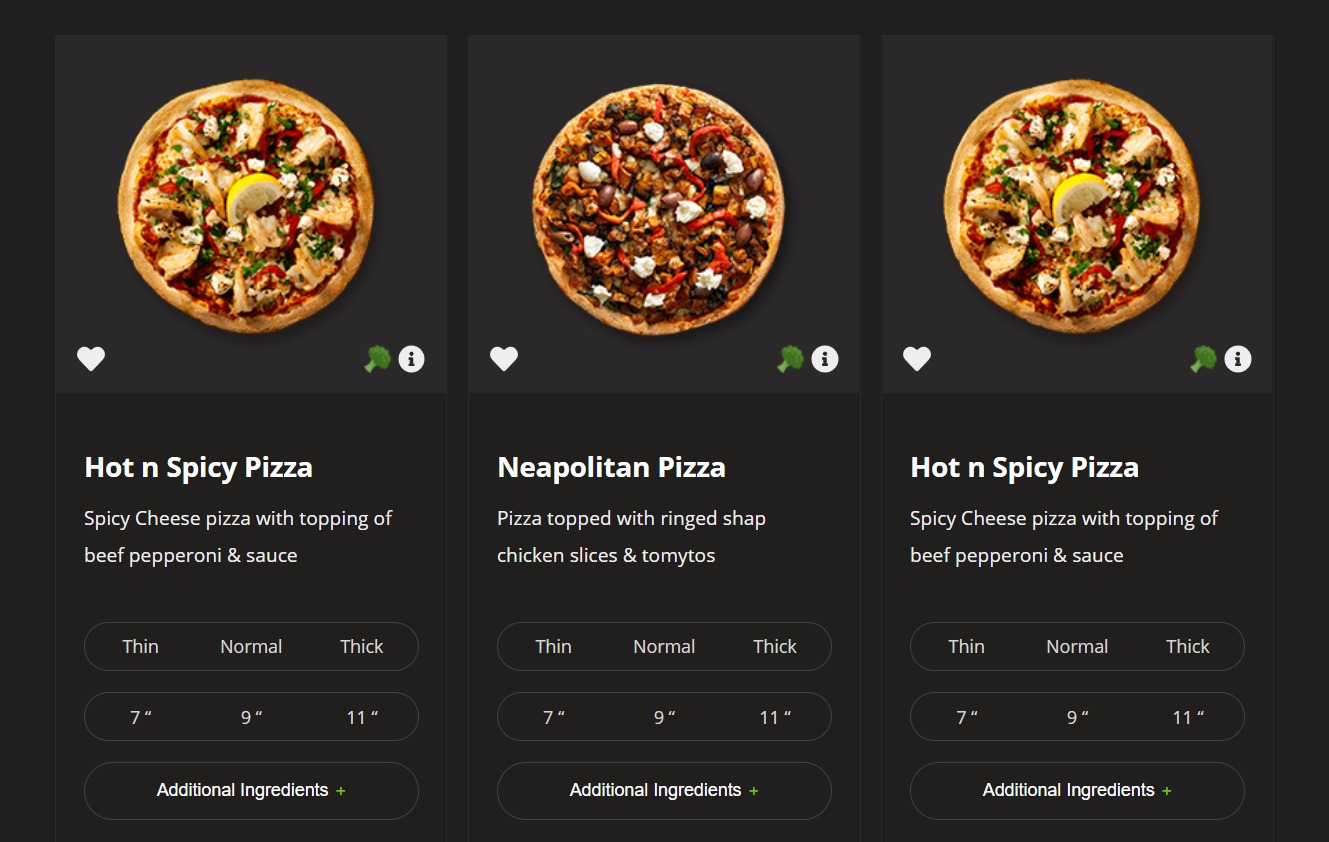
In a world where customers are more likely to buy something online instead of visiting physical stores, retailers need an edge in attracting potential buyers. One way that e-commerce sites can do this is by providing high-quality images for thumbnails and product listings on their websites as well as recommending appropriate sizes according to platform providers’ guidelines.
To create an authentic brick-and-mortar shopping experience for customers, e-commerce stores need to pay attention not only to their product images but also to the sizes of those thumbnails. The thumbnail should be large enough so that it can capture consumer attention while still being simple enough on-screen as a whole without distracting from anything else around them or getting lost in detail when zoomed out far away from any given item listing.
#3. Number of Products Found in a Category
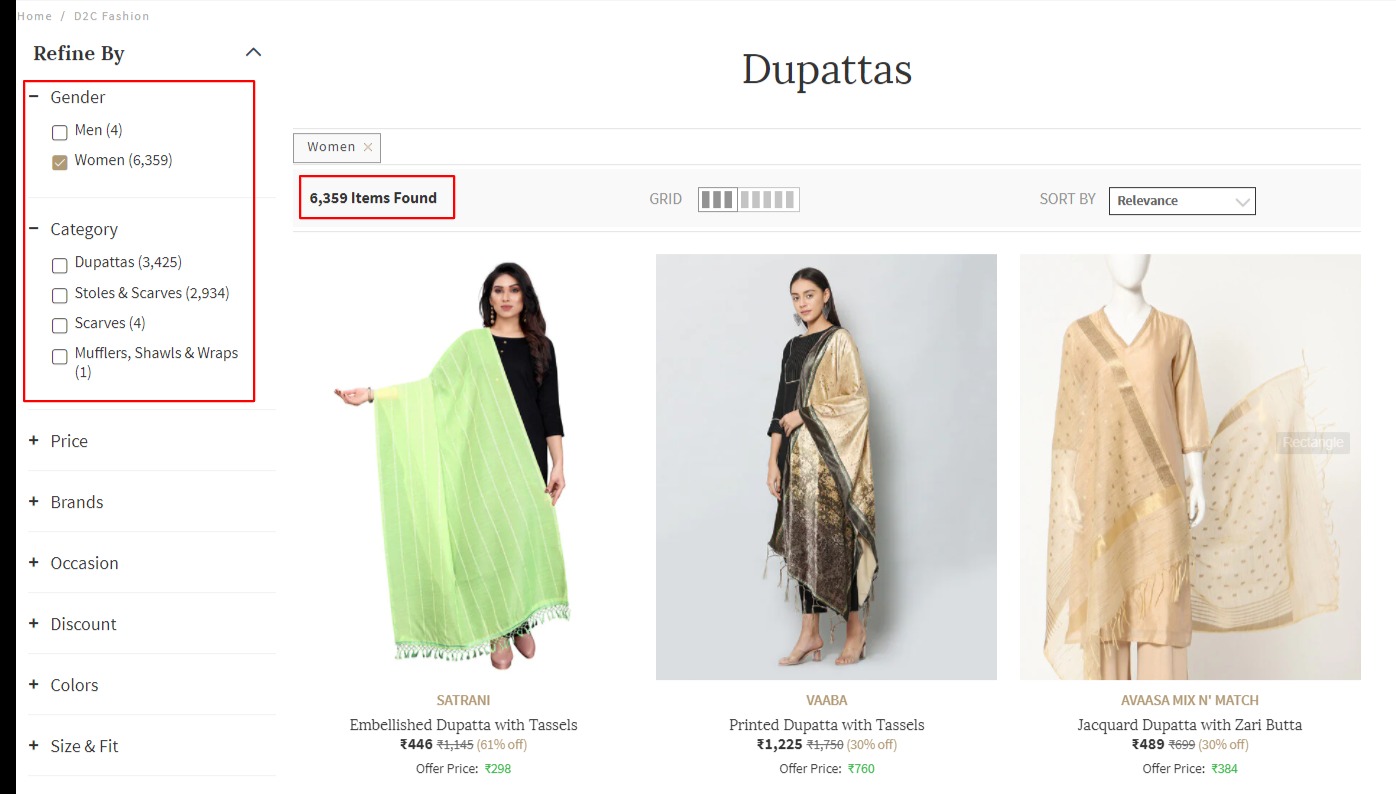
This feature makes it easy for your customers to find what they are looking for. Seeing 5,000 items found will probably encourage them to narrow down the results with filters so that you can save time instead of viewing 250 different pages on each product page in hopes of finding one perfect item.
At first glance, this may seem like an inconvenience but when taken into account from a business perspective there’s no other option than using sorter functions since varying amounts/products vary per category which allows users to efficiently explore all available options without getting overwhelmed or frustrated.
#4. Product Filtering and Sorting
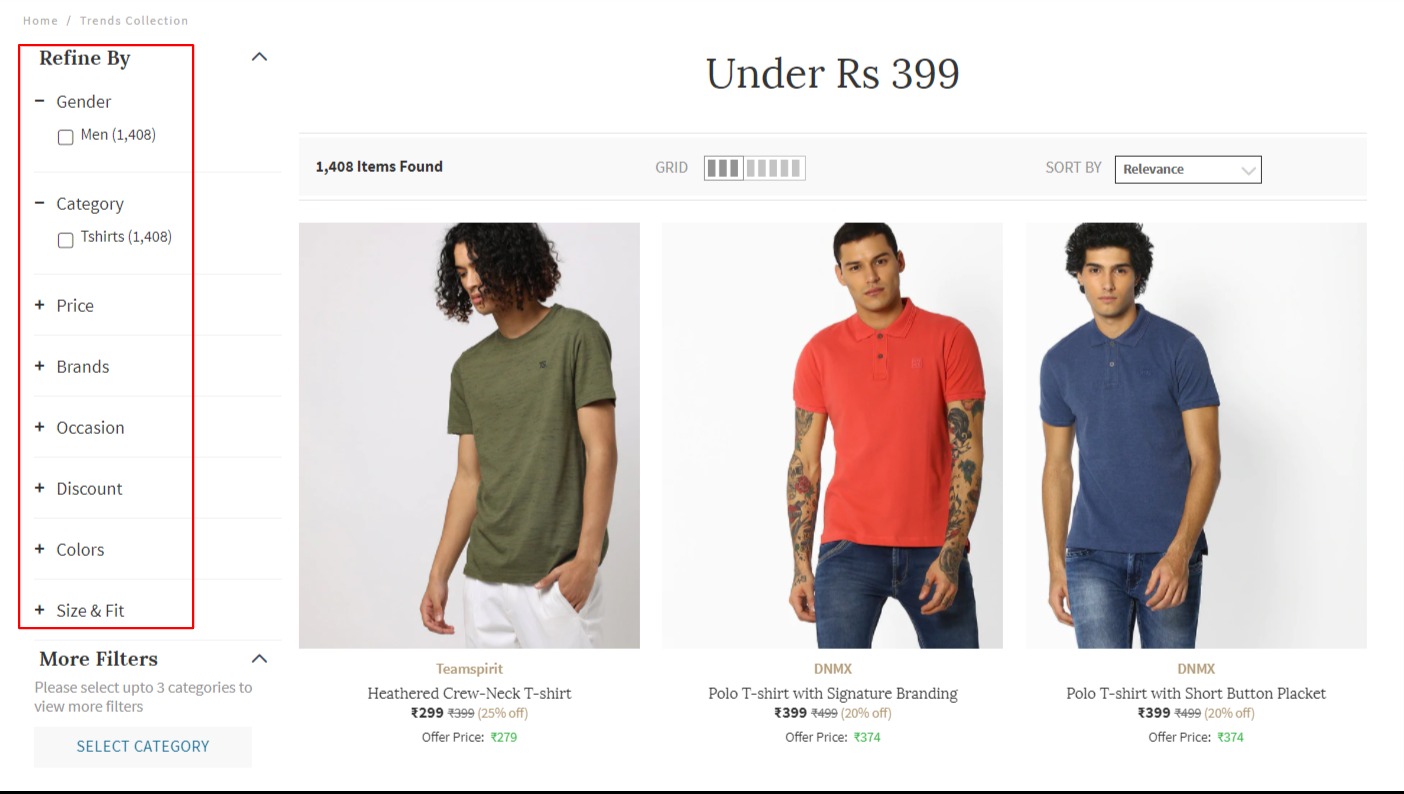
The ability to filter and sort products by specific characteristics is an incredibly useful e-commerce website feature that enables shoppers not just to find what they’re looking for, but also allows them the option of changing their sorting order.
Choosing the perfect filter for your product will help you reach more customers. You can choose from a wide range of different filters, like color or size preferences. This makes shopping easier and faster because it removes any uncertainty about which qualities should be considered when making an order.
#5. Pagination
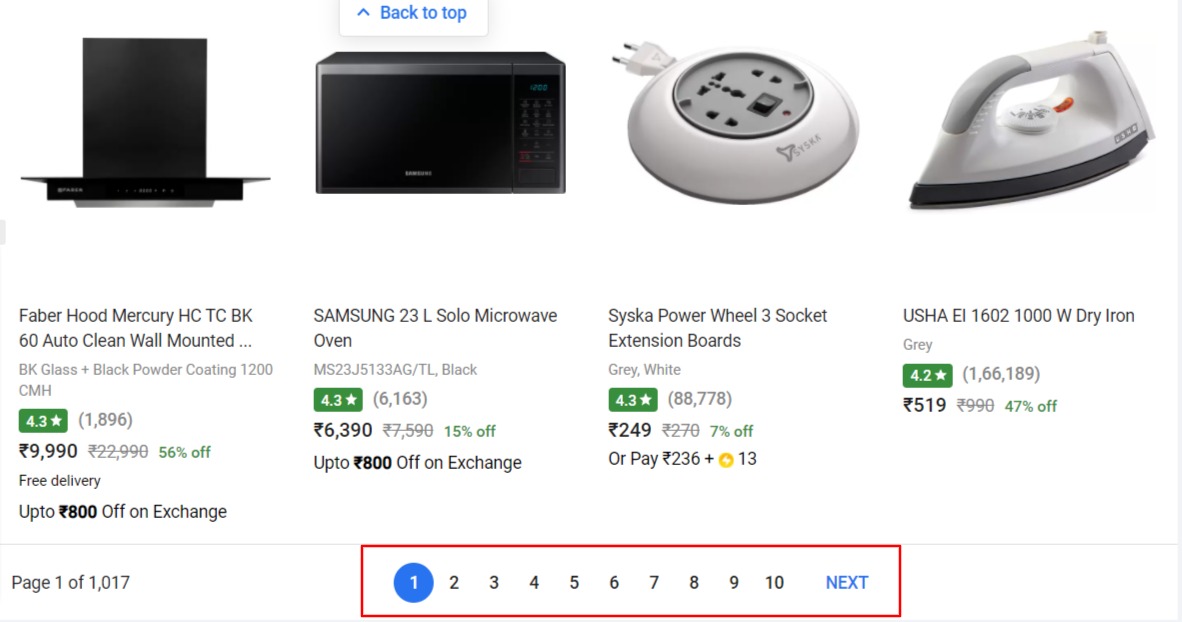
The next e-commerce feature that you should be including on your website is pagination
To make navigation easier on a website, pagination is an essential e-commerce feature. It divides all the goods into one category by separate pages for more convenience and allows shoppers to jump right into what they want without having to browse around aimlessly or read unnecessary details.
Features of E-commerce Website Product Page
When it comes to selling products, the product page deserves special attention. It showcases what you have for sale and helps people understand if their needs can be met by this item or not. But What does a well-designed product page look like? Let’s take an up-close look at some of these crucial elements:
#1. Product Title
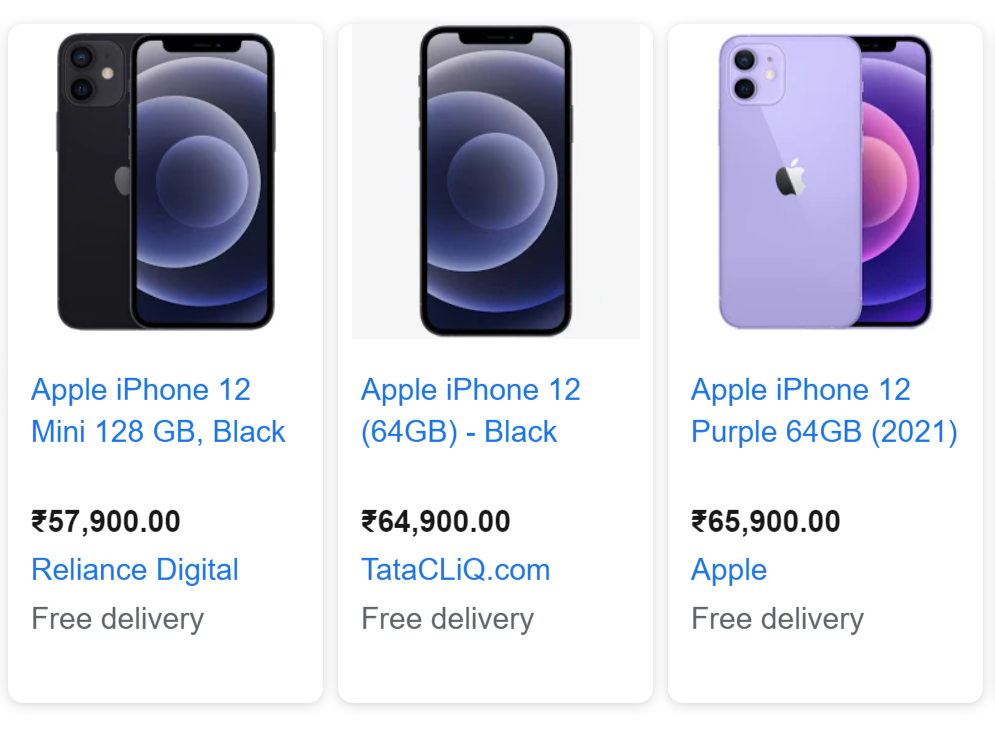
Product titles are important because they allow potential customers to understand the general characteristics of your products. You must choose a title that will be noticed and allows users to make an informed decision about their purchase quickly.
When picking out something descriptive for this section would involve thinking about what features identify with each brand or type if it is not clear-cut enough already, but also takes into account how people might search online by entering keywords related specifically to these needs to find exactly what they’re looking for.
#2. Good quality of Images with Zoom-in Functionality

When you are shopping offline, the product gets examined in detail. But when buying online there’s no chance for customers to see what they’re purchasing because of low-quality images that just blur everything out and make them skeptical about your shop altogether! To combat this problem with integration into their eCommerce experience making it more beneficial than ever before by integrating zoom features so people can get a good look at all aspects from fabrics through textures while also noticing any stitches or markings on clothing fibers.
#3. Customer Reviews
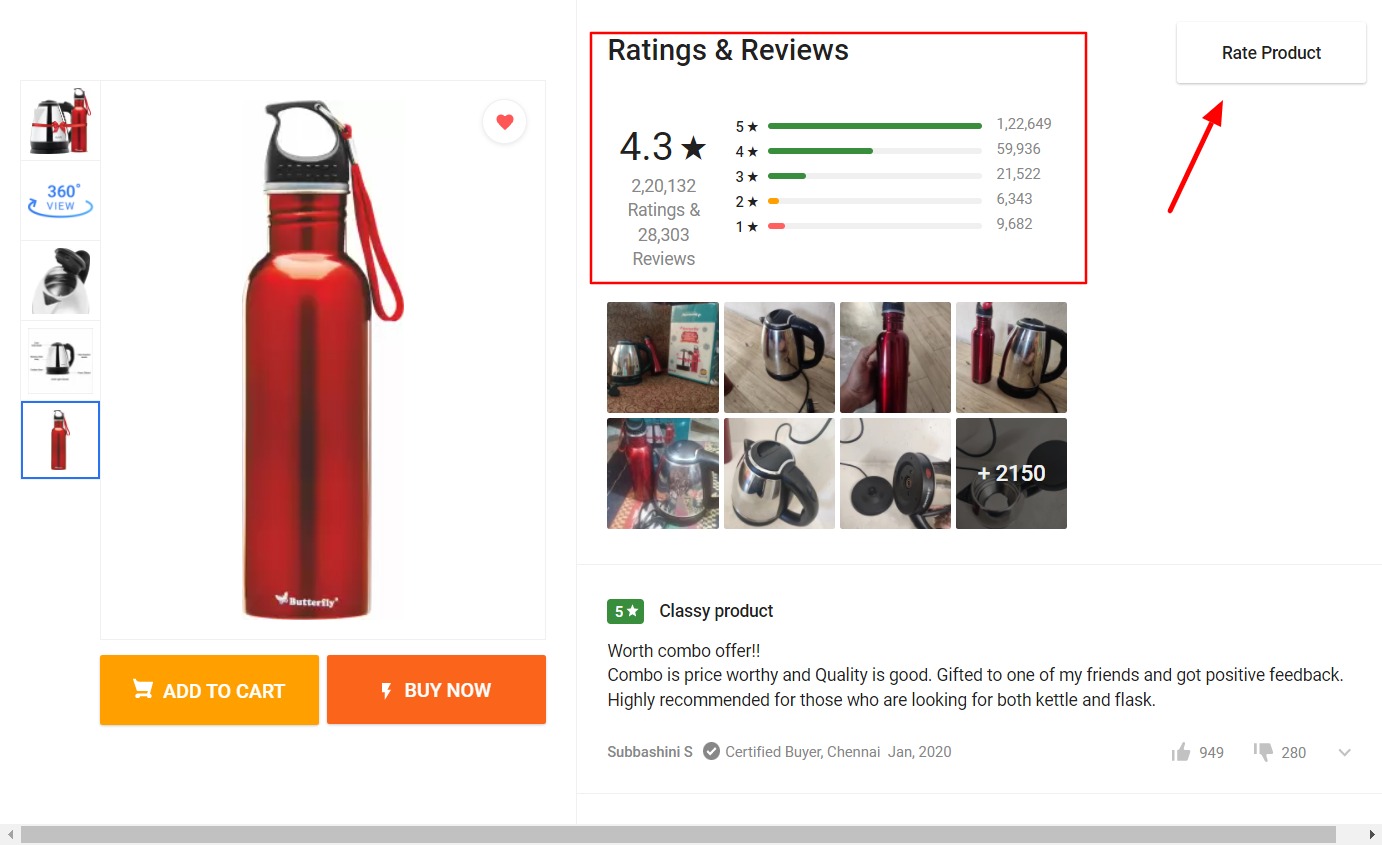
To ensure the best possible customer experience, it is essential that customers can read honest feedback from other consumers before they make a purchase. Over 65% of online shoppers will only buy products on sites where there’s been at least one review posted with positive comments about how well made or satisfying an item was within its given scope; this means integrating such an e-commerce website feature increases trust in your brand and shows you’re not afraid getting real person’s perspective when making purchases.
#4. Pricing Info
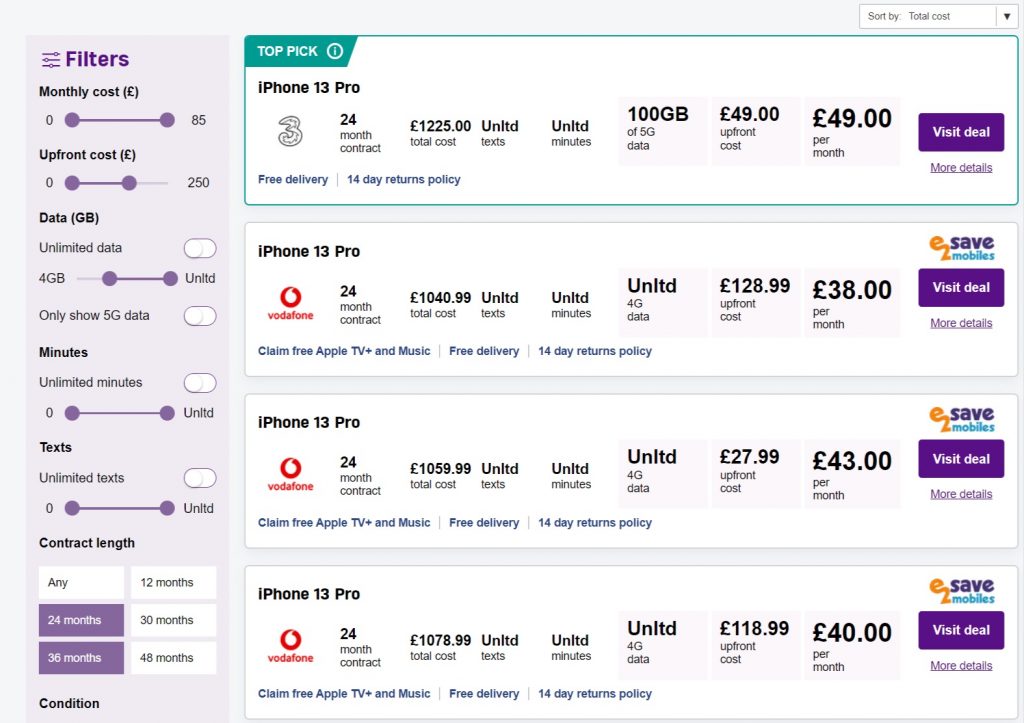
With so many online stores offering discounts and promo codes, product page development needs to highlight the best deals. This way shoppers can make their decision based on whether or not they want this specific item now at an affordable price with potential savings in mind.
To help your customers understand the value of their purchase, you must show both original and new prices. For example, if they’re buying 2 similar items or more then provide discounts that can be applied automatically during the check-out process by using the coupon code feature or by adding gifts or rewards.
#5. Add to Cart
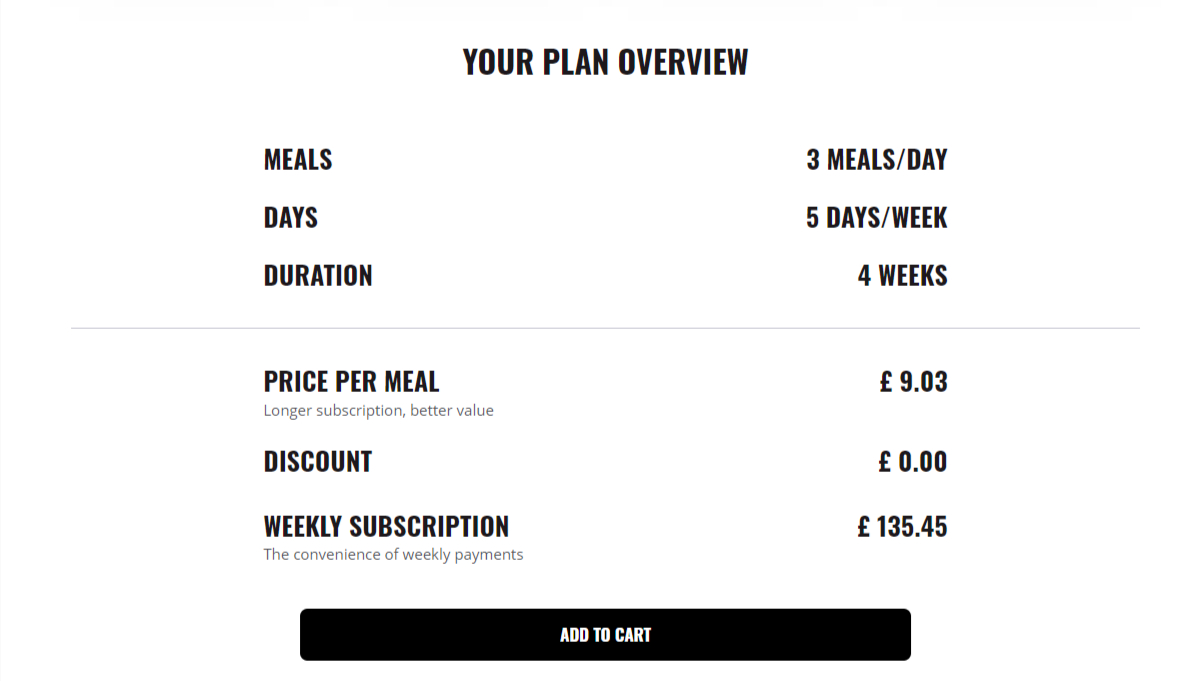
When a customer is shopping on the web, they have many different things to take into consideration. One of these important features for an e-commerce site will be what they call “add to cart.” This important CTA button should be highly visible and draw attention so that people can easily navigate through your whole catalog or find items just by browsing around.
Shopping Cart and Checkout eCommerce Features
That’s right, the shopping cart is a key feature of any online store. When someone visits your site and they want to make sure that you don’t miss out on their business – this page connects them with everything needed for placing an order. The best way to make sure your customers never lose focus on what’s important is by implementing a combined shopping cart/checkout page. This will allow them the ability to check out without having too many distractions, while still letting you know they’ve completed their order while making other adjustments like (adding addresses) that may need to be made before shipping begins. Let’s look at the features.
It’s no secret that people want to check every detail of an order before they make a purchase. This is why most retailers put this information in its separate section, so customers can focus on products that meet their needs perfectly and not get distracted by other things like billing or shipping details.
The following features are included in the cart:
Product title, thumbnail image, and specific options like color or size. The price of each product is displayed with quantities available for purchase as well at an overall subtotal including tax amount; it also shows how much will be spent on delivery if that’s opted out during the checkout process.
#1. Customer Details
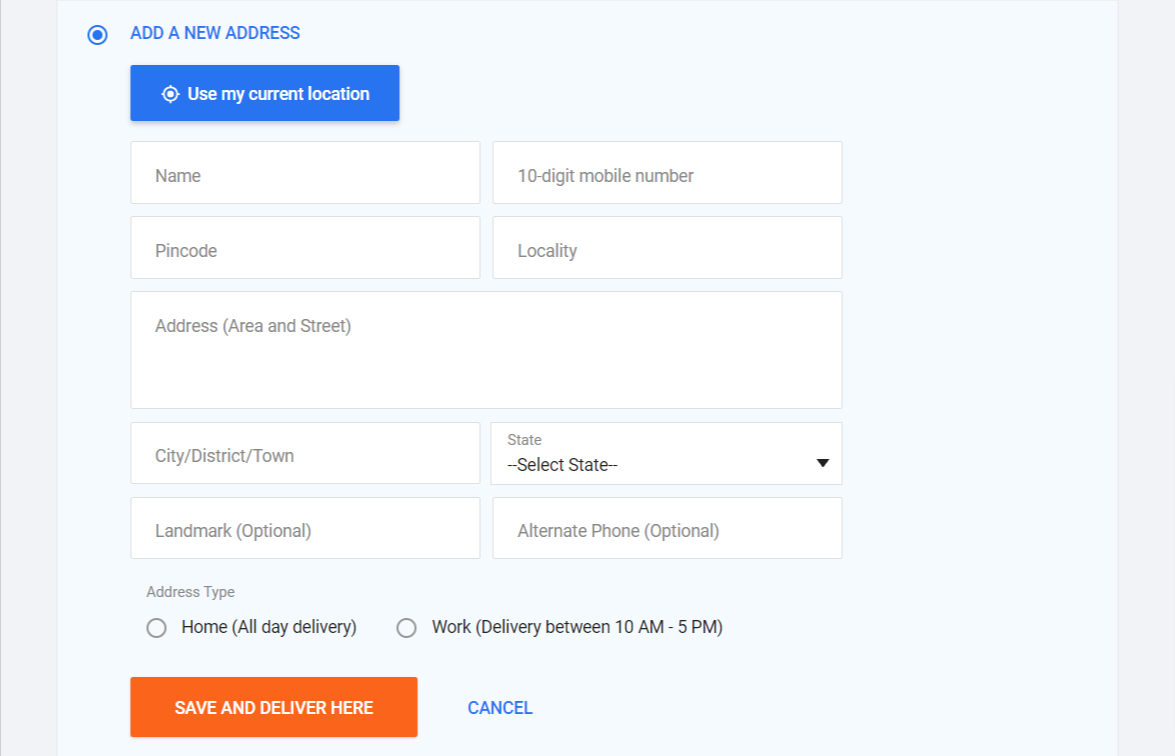
The common practice of having two separate fields for customer billing and shipping details is quite useful. The order can be a gift or they may live in different places, but their payment method will always link back to the address where all orders are sent – this makes it easy for both parties
These fields include:
- Email address
- First and Last name
- Address
- City, state
- Country
- Zipcode
- Phone number
#2. Shipping Methods
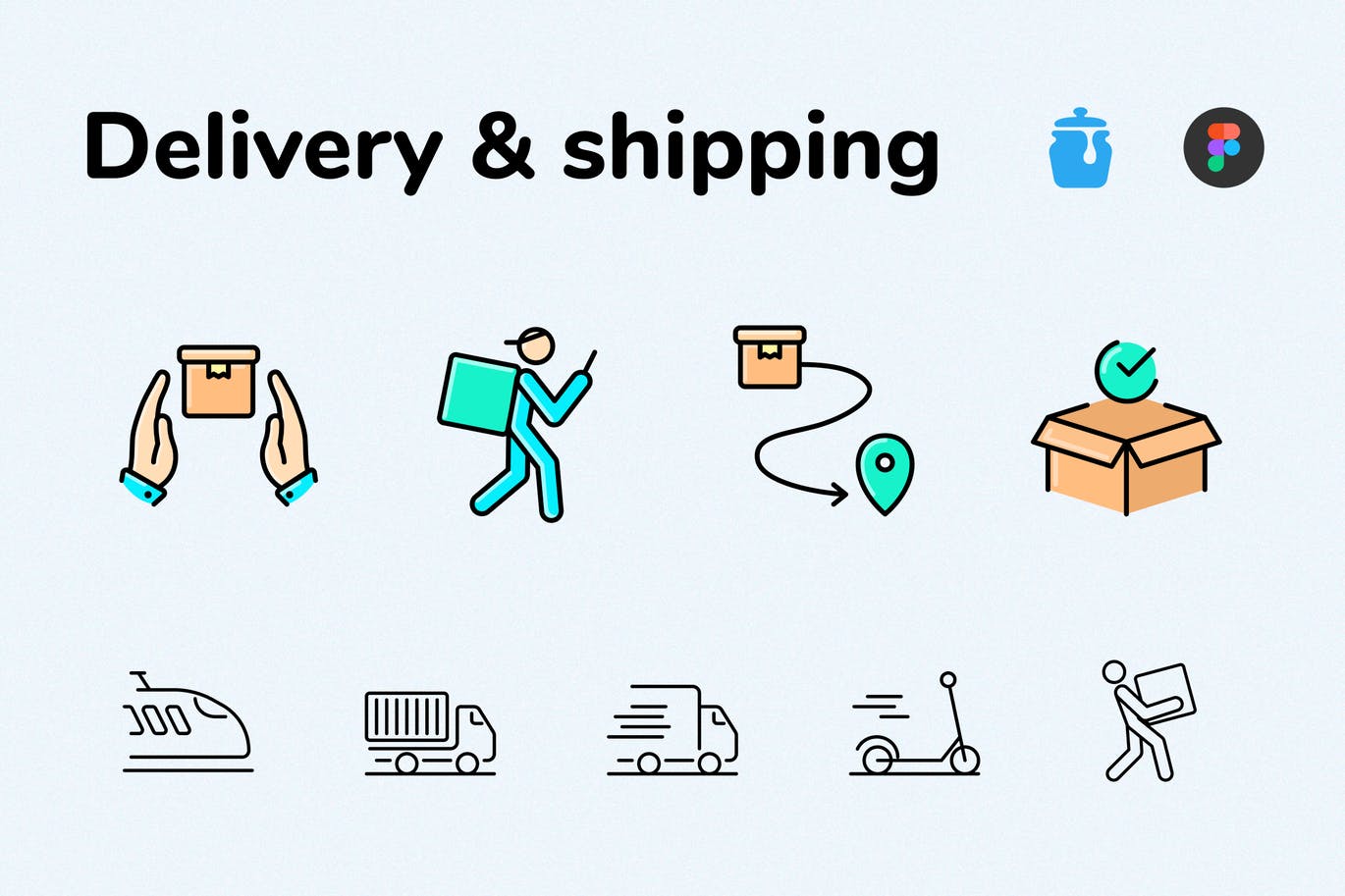
Shipping methods and their costs are important factors for customers when deciding whether or not they want to place a product order. We recommend having different options available in case one shipping cost is too high, but make sure that you offer free shipping if it’s possible!
This means offering both flat-rate & calculated fees depending on what best suits your business needs – this will keep things simple while still catering to any potential customer desires.
#3. The Field for Promo Codes
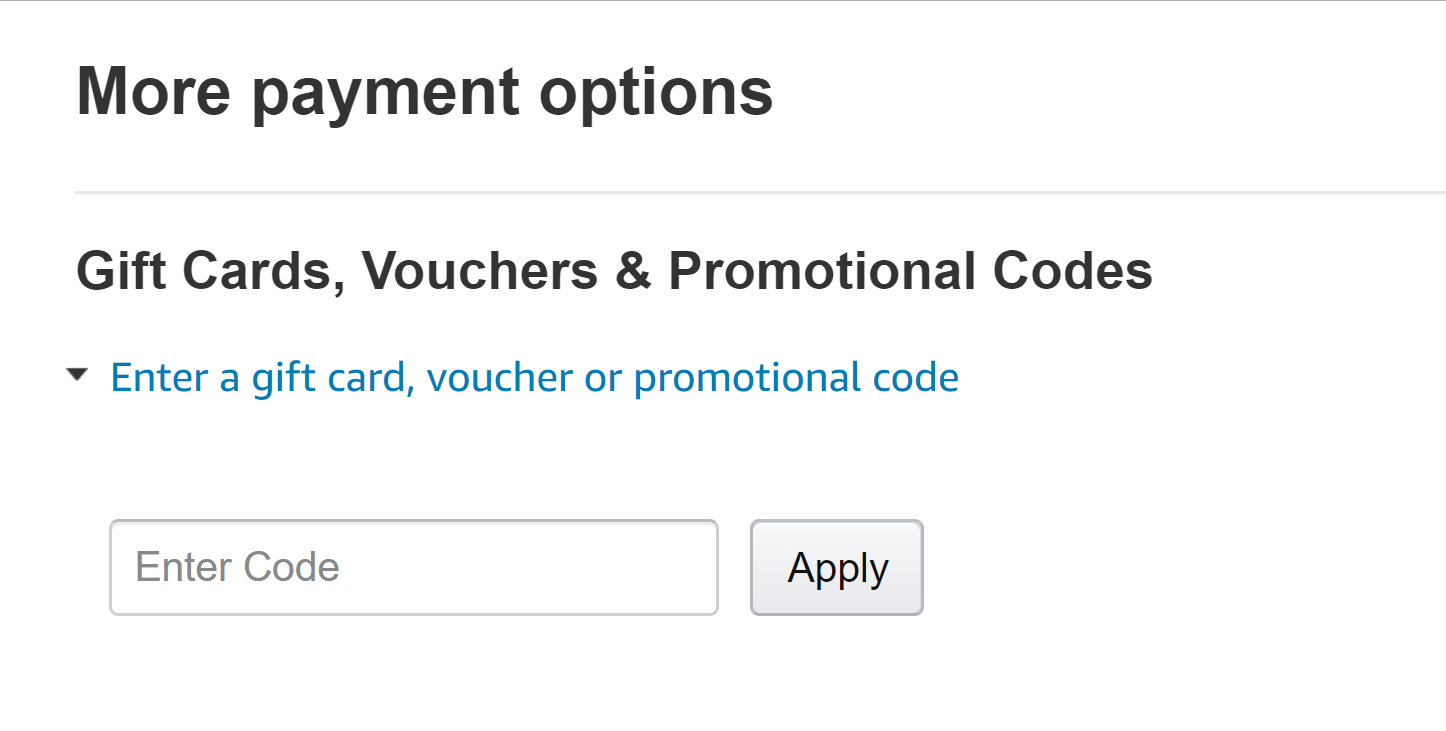
With the recent rise in popularity of online shopping, many stores are now relying on customer loyalty and coupon codes to maintain their business. When customers find that you offer promo deals throughout your website or store it can encourage them back for more product purchases while also giving off an impression about what they might be missing if some items aren’t purchased together at first glance from certain sections on-site; this helps retain visitor traffic since people want discounts when browsing digitally.
however if you hardly ever provide any kind of price reduction then avoid making this field prominent because shoppers may abandon Cart before finalizing the purchase.
#4. Option to Change or Remove Items from the Cart
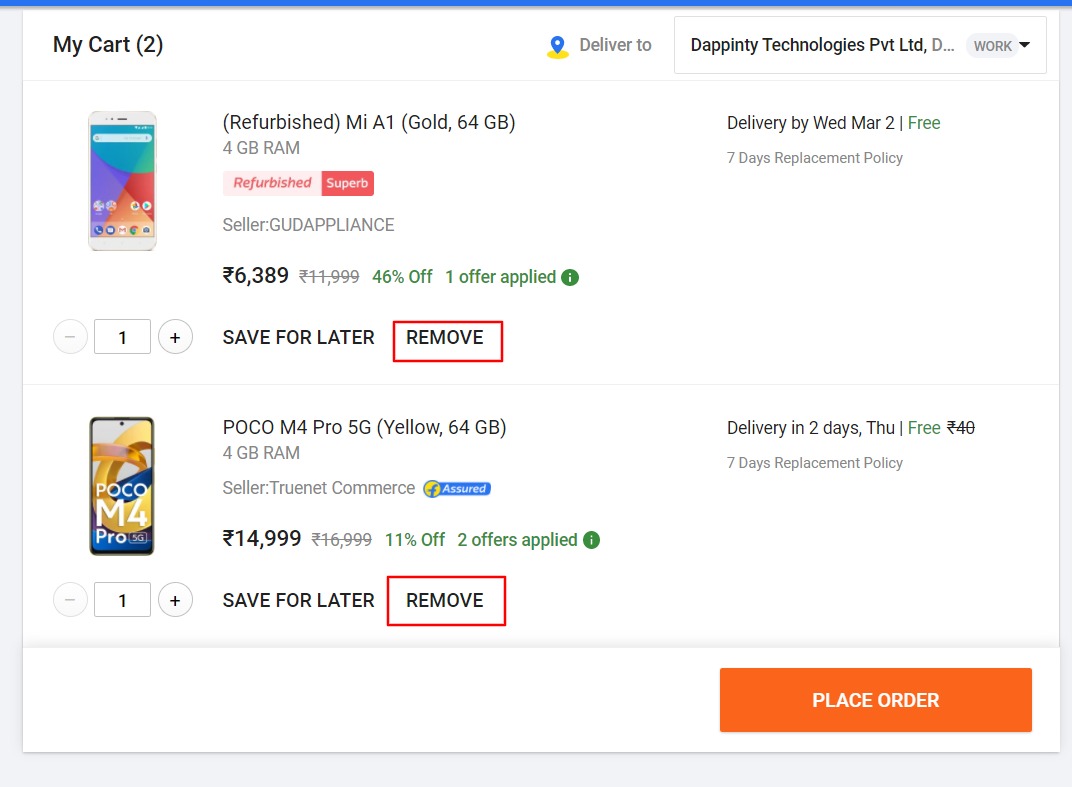
This e-commerce feature is an absolute must for any store that wants to keep customers happy. This e-commerce feature is designed to make the shopping cart experience easy and seamless for users, while also providing useful functionality during checkout. This improves customer satisfaction through faster load times that allow them to remove items from their carts or customize options like color or size right away without having to leave the site entirely.
Top eCommerce Platforms & Features Overview
#1. Shopify: An eCommerce Platform Overview
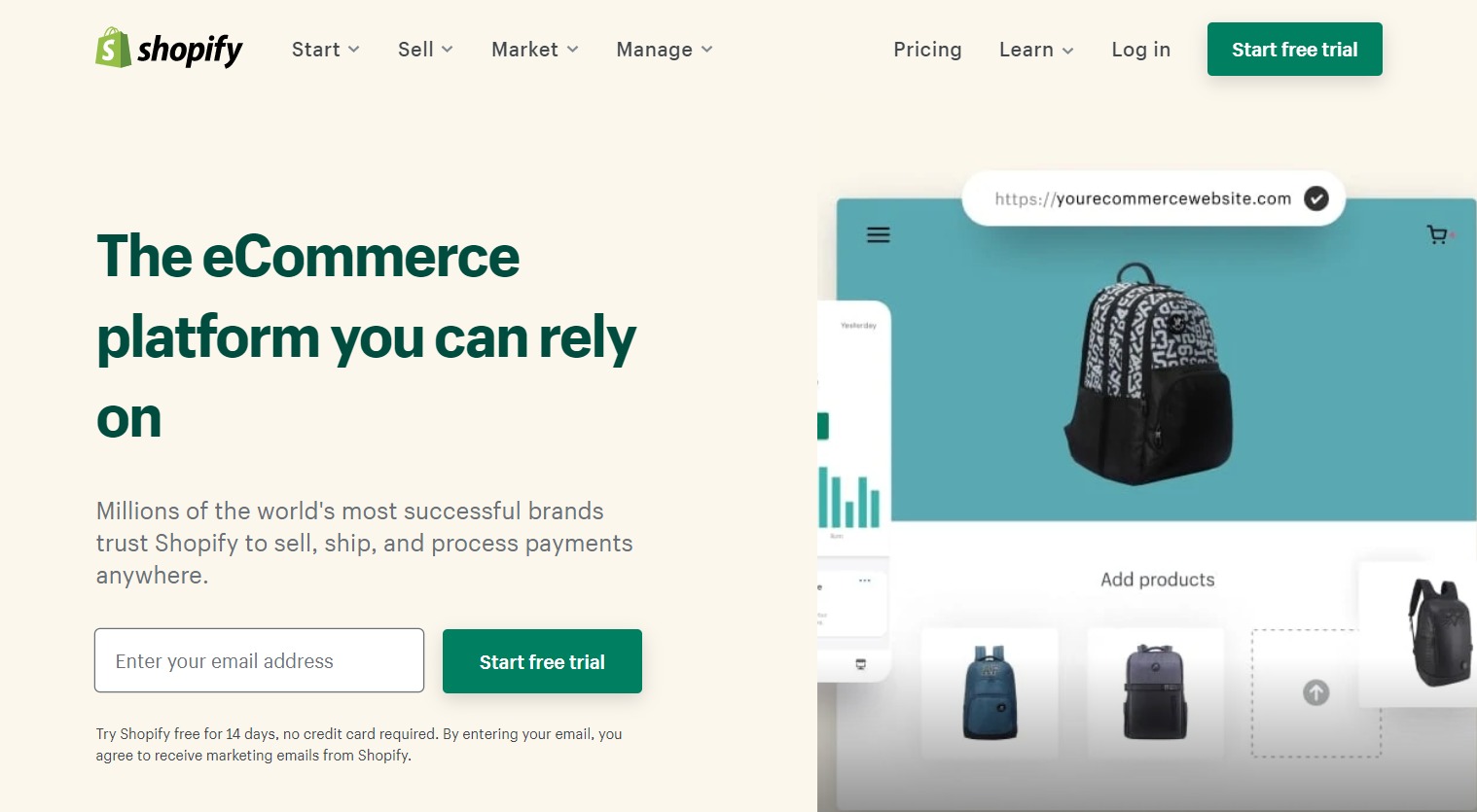
Shopify is a great option for those who want an easy-to-use and beautiful platform with plenty of features. Additionally, you can sell physical products on Shopify without setting up an inventory by using print-on-demand services or dropshipping, which allows you to sell without upfront stock investment. It’s been highlighted by its “plug-and-play” capabilities, which makes it super simple to get your store up running in no time at all! You can choose from lots of templates or build custom designs using apps like Instagram into one cohesive whole – there are almost limitless possibilities when building on Shopify. Shopify starter plan for only $5 per month. You can start a trial with the Shopify starter plan for only $5 per month. With above-average security measures as well as fast load times guaranteed Shopify remains on top of the list of top e-commerce platforms.
| Website | Features | Overall Rating | Pricing |
|---|---|---|---|
| https://www.shopify.in/ | 1. Storefront 2. Shopping cart 3. Store management 4. Marketing & SEO 5. Products 6. Web hosting 7. Analytics 8. Mobile App 9. 24/7 support | 4.3 out of 5 stars (3,915 reviews) Source: G2.Com | Basic: $29 USD per month Shopify: $79 USD per month Advanced: $299 USD per month |
#2. Wix eCommerce Platform Overview
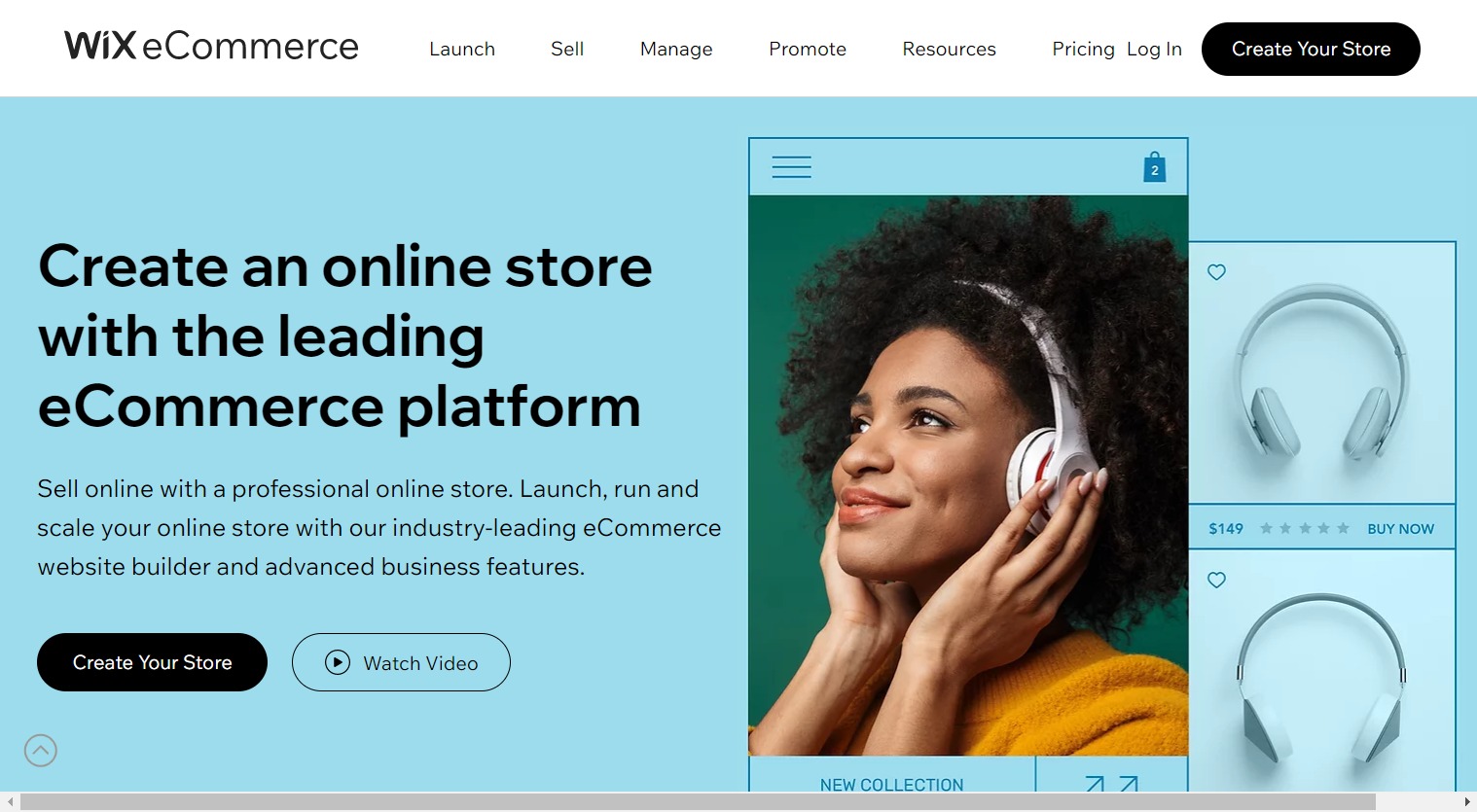
Wix is a great tool for those who want to build their eCommerce site and not spend hours trying out different software. The Wix Editor lets you customize elements of your website, as well as pick from templates or stock images that simplify the process! You can even get one-pager websites It is a powerful tool for website builders that lets you focus on creating content and managing your products. The interface of WIX makes it easy to build, maintain an online portfolio or store without having the hassle of setting up domains, etc., all in one place.
| Website | Features | Overall Rating | Pricing |
|---|---|---|---|
| https://www.wix.com/ecommerce/website | – Storefront & eCommerce website – Cart & checkout – Products – Store management – Marketing & SEO – Payments – Store analytics – eCommerce apps – Wix Owner app | 4.2 out of 5 stars (1,422 reviews) Source: G2.Com | Business VIP: $49/month Business Unlimited: $27/month Business Basic: $23/month |
#3. Adobe Magento eCommerce platform overview
Adobe Commerce provides a powerful platform for launching, managing, and scaling your business. The software has the ability to host multiple instances on one platform with cloud deployment capabilities that are natively integrated into other products like Analytics Target Experience Manager and Creative Cloud making it easier to take personalization levels up another notch.
Adobe Commerce is the only e-commerce platform that lets you manage your sales channels and brands from one, easy to use interface. Whether B2B or B2C is ready for direct consumerization (DCD), Adobe gives retailers everything they need in order to expand into new countries without sacrificing efficiency with its simple yet powerful features like international expansion capabilities:
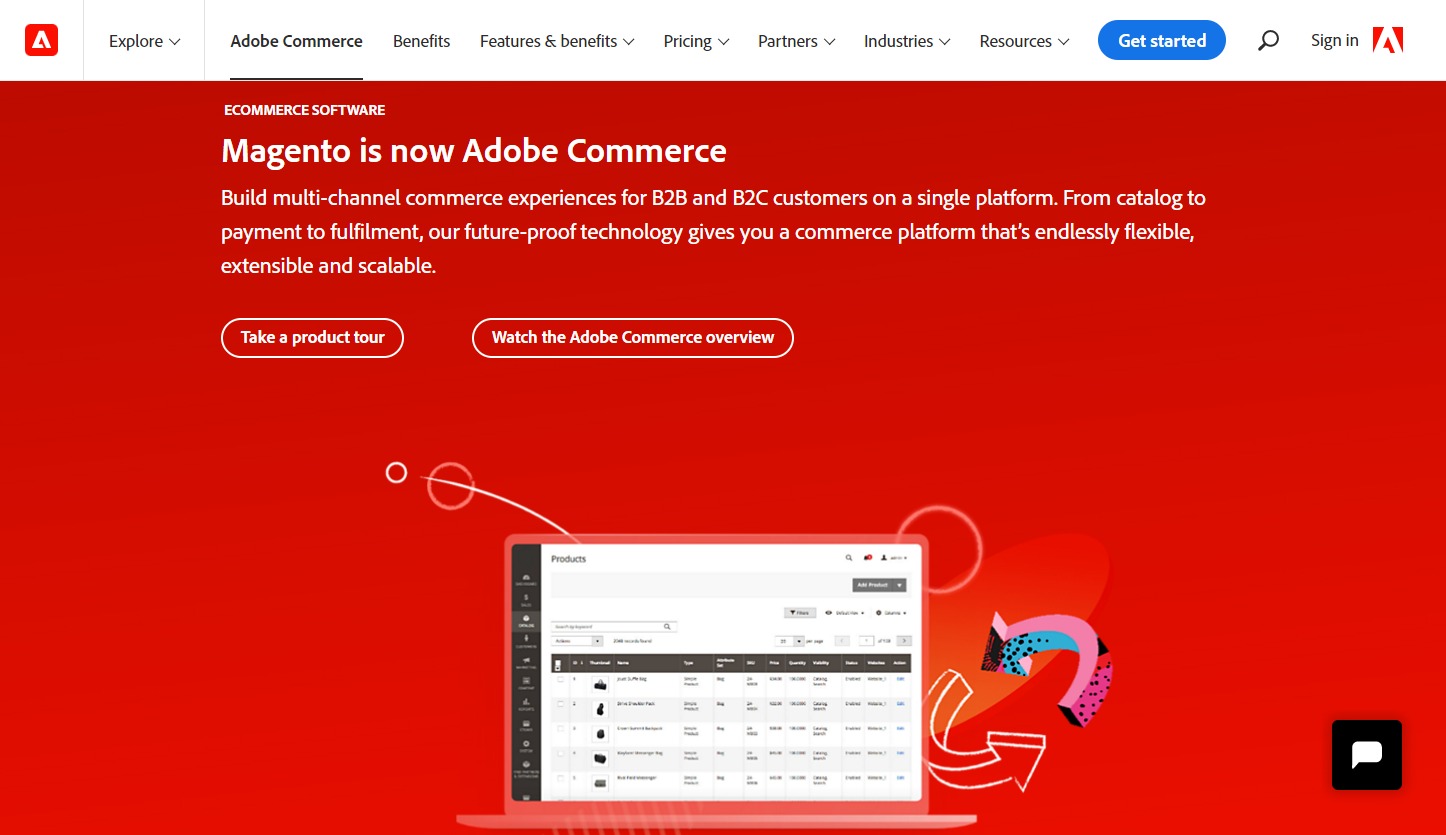
| Website | Features | Overall Rating | Pricing |
|---|---|---|---|
| https://business.adobe.com/in/products/magento/magento-commerce.html | – Extensions – Themes – Customer – Support – Payments & Security – Marketing – Accounting & – Finance – Shipping & Fulfillment – Site Optimization – Sell anywhere – Manage and deliver – Measure and optimise – Scale and support – Payments and Financing | 4.3 out of 5 stars (536 votes) Source: Getapp.Com | Magento Commerce is a subscription based platform that starts at approximately $1,600 per month for its Starter plan. |
#4. BigCommerce eCommerce Platform Overview
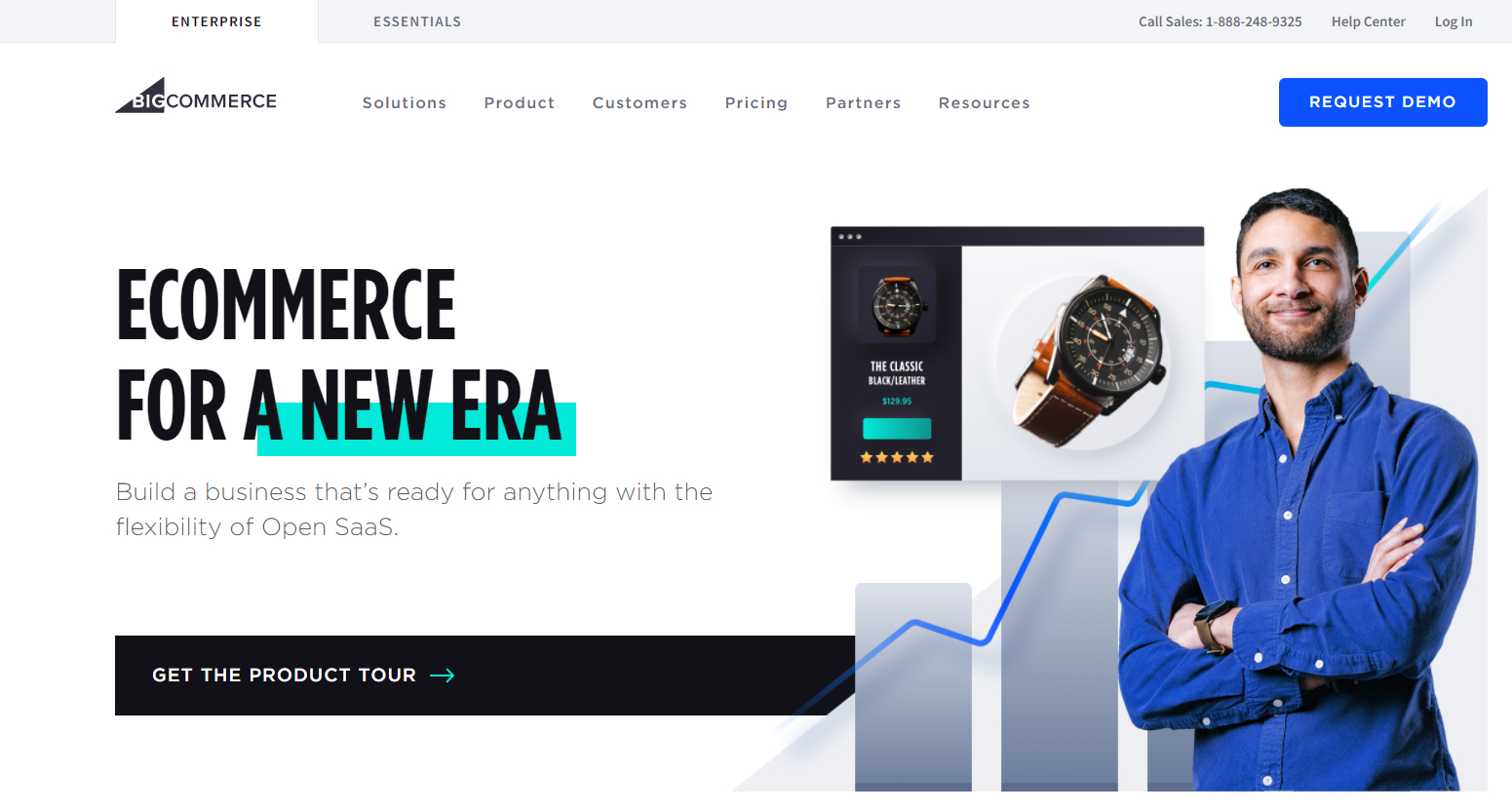
With BigCommerce, entrepreneurs can design and run an online store that powers their business. The world’s leading cloud eCommerce platform provides support for thousands of retailers around the globe who are rapidly growing or have already established themselves in markets.
BigCommerce offers an extensive set of features that are designed to make eCommerce scaling easier. Its advanced SEO tools and fantastic multi-channel integration means it has more built-in than any other competitor, with the advantage also comes attention from customers who want reliable solutions for their business needs.
| Website | Features | Overall Rating | Pricing |
|---|---|---|---|
| https://www.bigcommerce.com/ | – Storefront Design – Storefront Conversion – API-Driven Commerce – Headless Commerce – Sell Everywhere, With One Platform – Cross-Channel Commerce – B2B I – nternational – Smart Ops, Smart Scaling – Scalable Catalog – Shipping – Staging Environment Tax Refunds & Returns Reporting & Analytics | 4.2 out of 5 stars (414 reviews) Source: G2.Com | There is no set dollar amount, as BigCommerce provides pricing tailored to each merchant’s needs at any stage of growth. |
#5. WooCommerce eCommerce Platform Overview
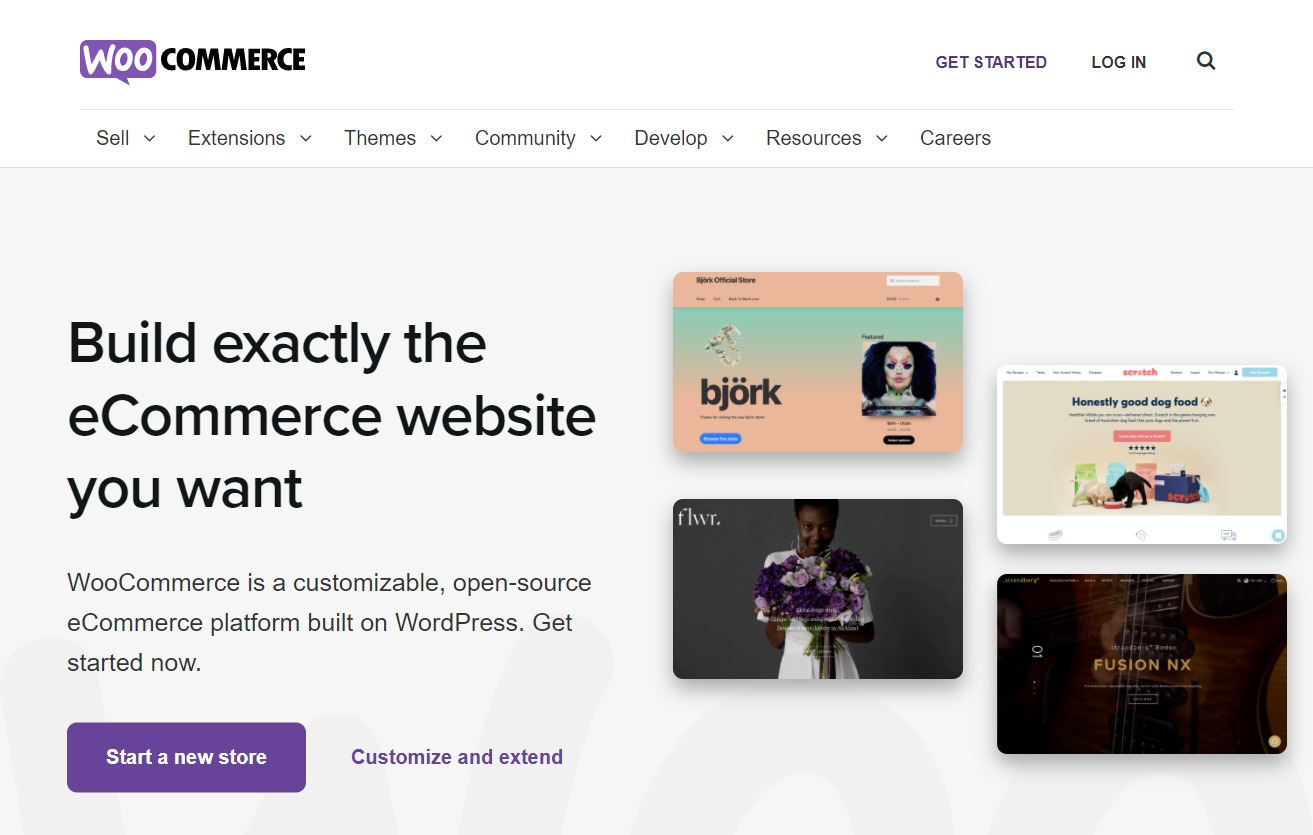
WooCommerce is the leading eCommerce plugin for WordPress. It features a simple interface that makes managing an online store easy, with reasonable levels of flexibility and several vital functions such as inventory management or tax collection – all backed by professional support from the team at hand!
Woocommerce is the best e-commerce platform to use if you want an easy way of accepting payments. Its secure payment gateway makes it possible for your customers with any credit card or PayPal account, as well! The uploading process is much simpler now that they can simply provide CSV files containing all their information–including product name, details/descriptions etcetera. In short, it’s the best eCommerce platform for WordPress.
| Website | Features | Overall Rating | Pricing |
|---|---|---|---|
| https://woocommerce.com/ | – Start Selling Anything Online – Build and Customize Without Limits – Optimize and Grow Your Business – Leverage the Power of WordPress | 4.4 out of 5 stars (923 reviews) Source: G2.Com | WooCommerce Starter: $6.95/month WooCommerce Plus: $8.95/month WooCommerce Pro: $12.95/month |
#6. Webflow eCommerce Platform Overview
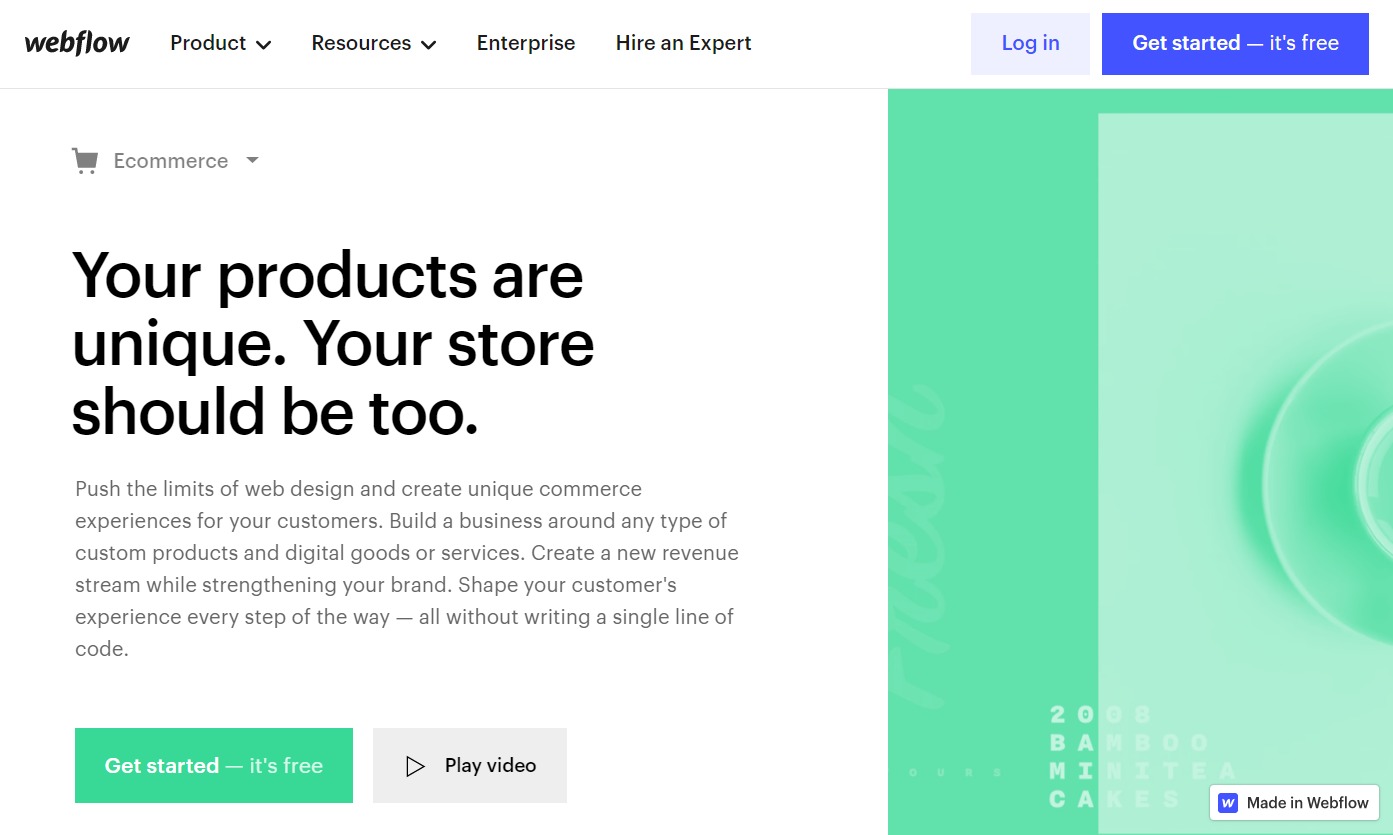
Webflow is a revolutionary eCommerce platform that gives designers the ability to create custom layouts, interactions, and experiences without writing code. This powerful tool lets you build eye-catching websites with amazing animations in no time at all.
Webflow has everything you need to create a website that will stand out from the rest. With its wide range of features and easy to use design, it’s perfect for any business owner or online retailer looking forward to their future with confidence.
| Website | Features | Overall Rating | Pricing |
|---|---|---|---|
| https://webflow.com/ecommerce | – Designer – CMS – Ecommerce – Interactions – Memberships – Curate gated content – Editor – Logic – SEO – Security – Hosting | 4.3 out of 5 stars (339 reviews) Source: G2.Com | Standard: $29 /mo Plus: $74 /mo Advanced: $212 /mo |
How can VOCSO Digital Agency Help?
It’s hard to predict the future, but by looking at past trends and extrapolating, we can get a good idea of what eCommerce website features will be popular in 2023. We’ve put together a list of the top features that we think will be key in the coming years. If you want your online store to stay ahead of the curve, make sure you are incorporating these features into your design plans. If you’re looking for an eCommerce design agency like ours to take your online store to the next level, look no further. We provide top-notch design services that are sure to increase traffic and conversions. Contact us today to learn more about our eCommerce design packages!
Conclusion
In this article, we discussed the must-have features of an eCommerce website. Some are necessary for creating a successful online store, others can be considered as basic standards and still work well in most cases while other more advanced options may help you stand out from competitors long term if used properly with your business model.


